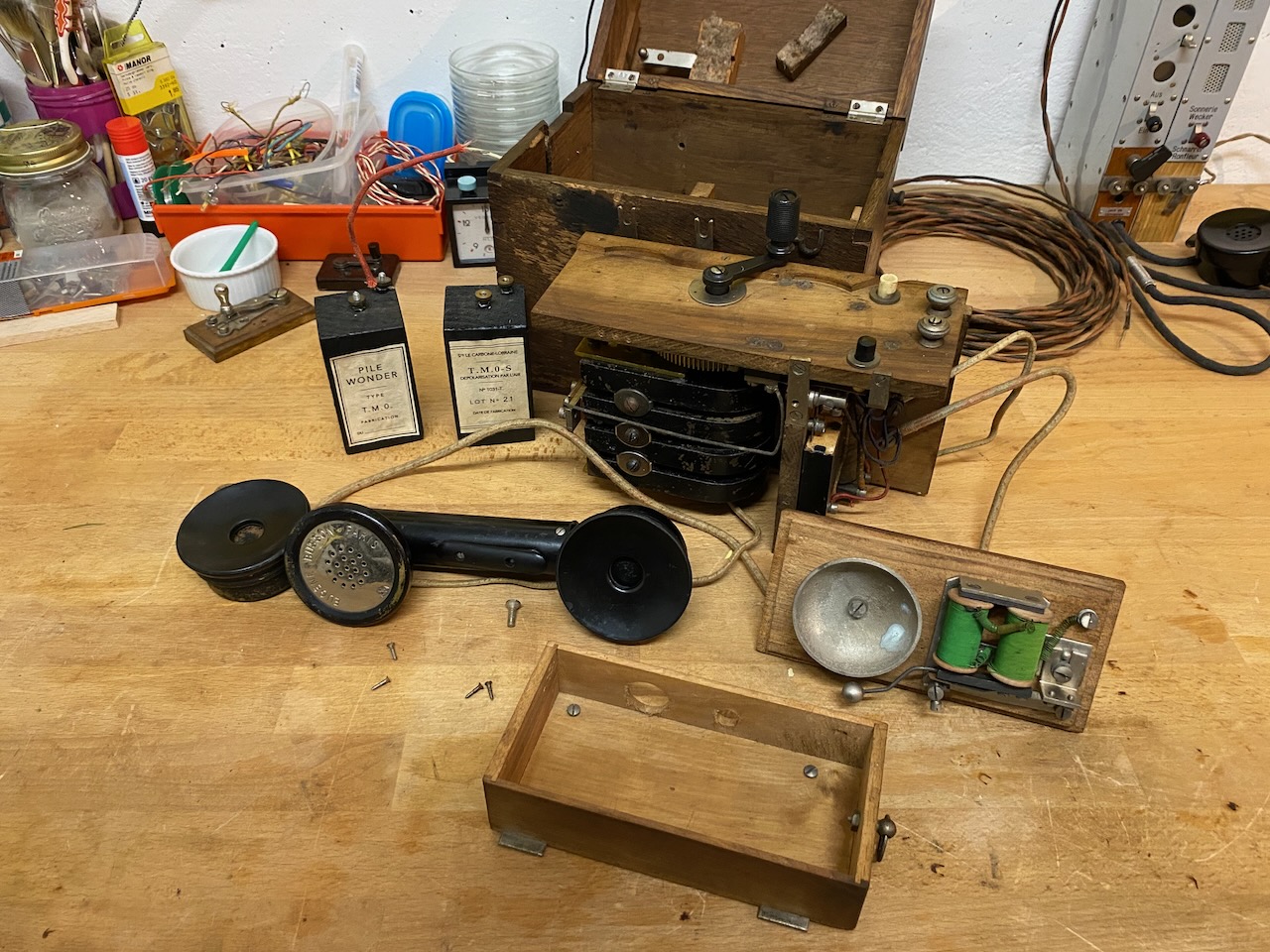
Find more details on French field telephone history on the French Field Telephones Timeline.
At the beginning of WWI the french army in total has only a couple of hundred telephones available, then during the war years up to 1918 more than 200'000 were acquired [7]. Most of these were probably the Téléphone Militaire Modèle 1916 (TM16), though production numbers are not documented, multiple providers contributed to its manufacture [8].
From "Notice sur le Materiel Téléphonique" [1] (translated from french):
This set is enclosed in a single leather bag. It is a transformation of the 1909-1915 set with the aim of lightening it and reducing its bulk. This new set includes: 1 A handset with carbon granule microphone and a telephone receiver; 2 A second telephone receiver; 3 A magneto with included buzzer; 4 A ringer; 5 A spare microphone capsule; 6 Two TM No. 0 battery cells.
The magneto on this set can be used as normal magneto to generate a low frequency signal to activate polarized or vibrating ringers. An added buzzer circuit with a buzzer blade can be activated (using the black button) to generate a higher frequency signal which can be heard on far end receivers. This type of buzzer does not require battery power as other typical field phone buzzers of that era.
The TM16 was still in use up to WWII, but as a modified version with disabled buzzer circuit and remove black button [3].
Disassembled.

Wiring diagram [1].
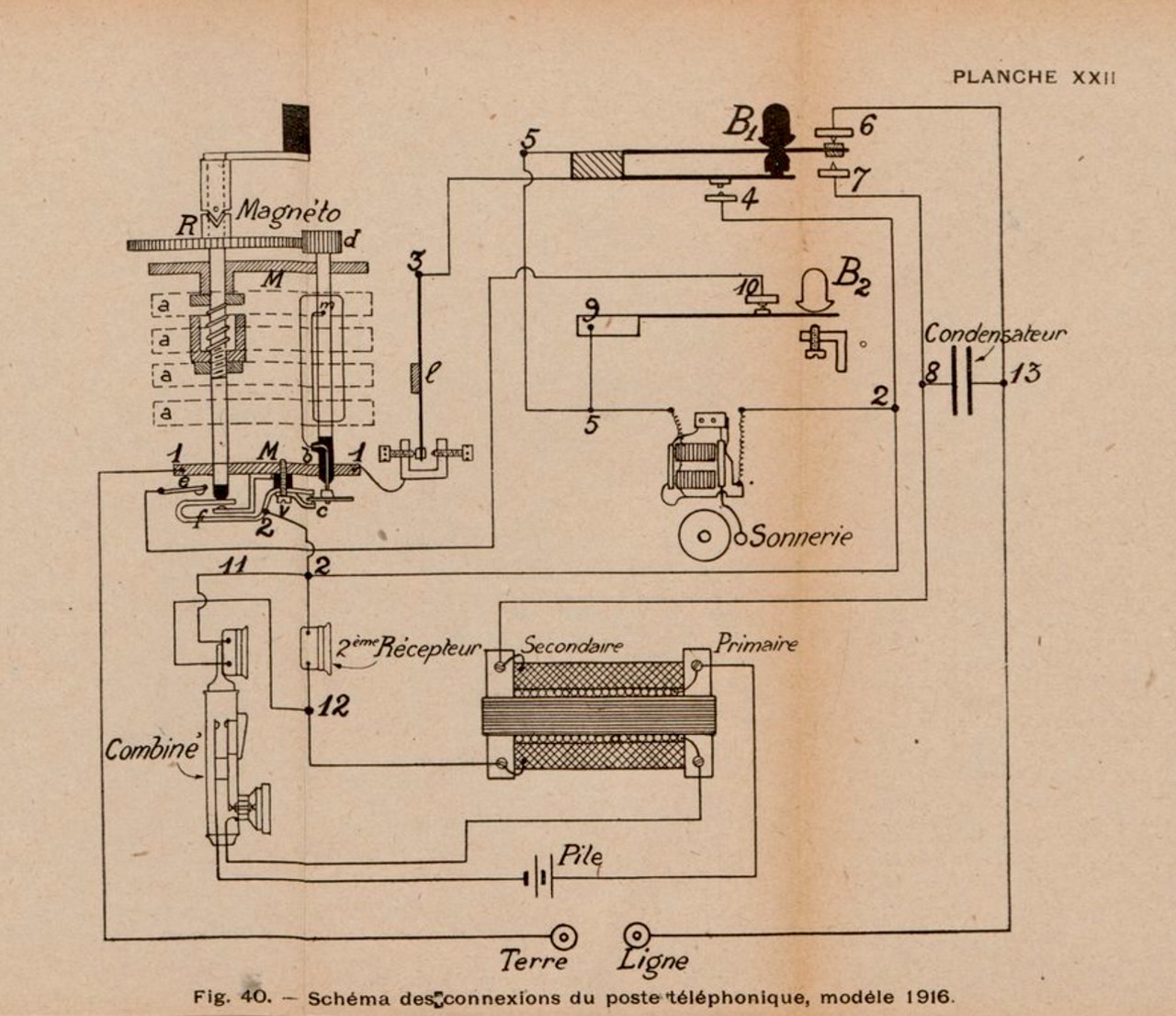
Electrical diagram [1].
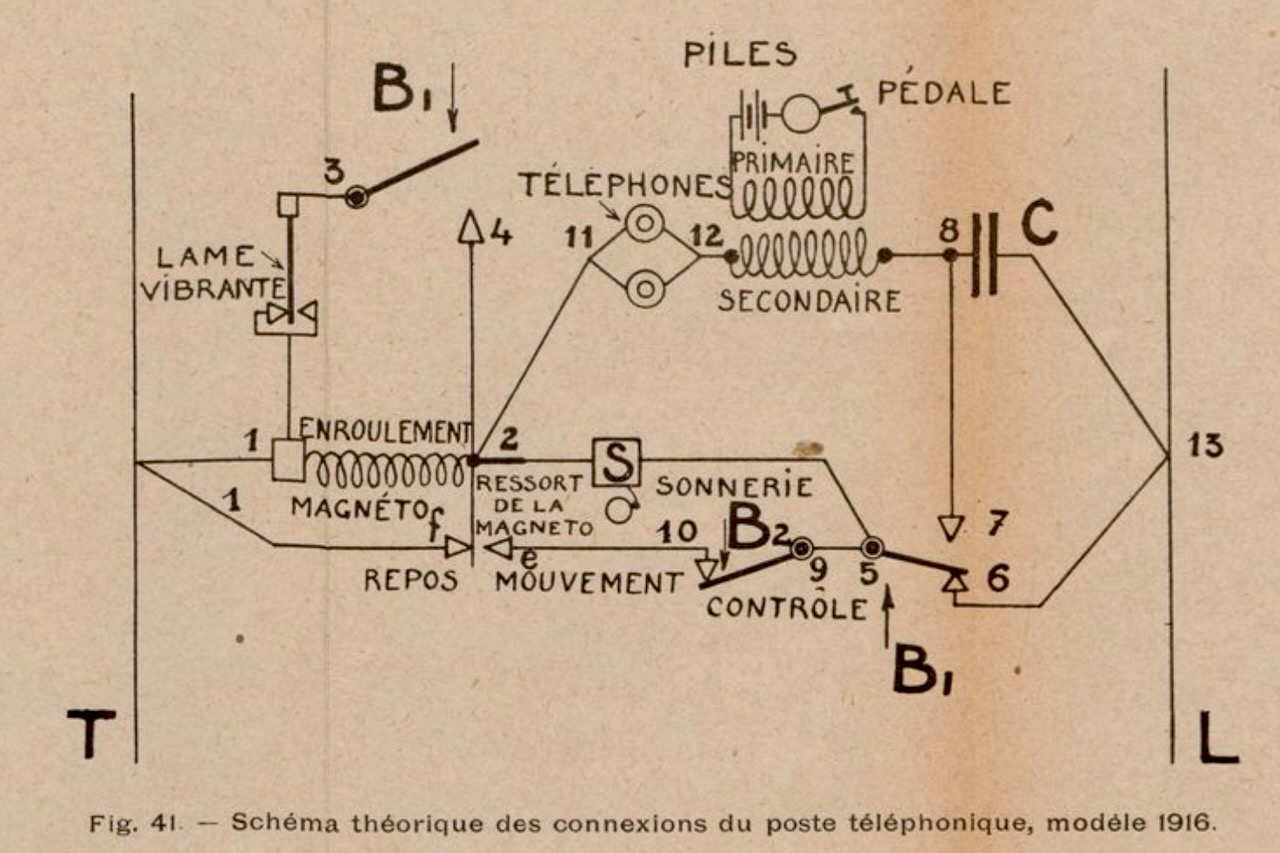
Disassembled handset and headset.
The rings holding the membrane on the receivers are corroded and stuck, I was not able to open them (without potential for destruction).
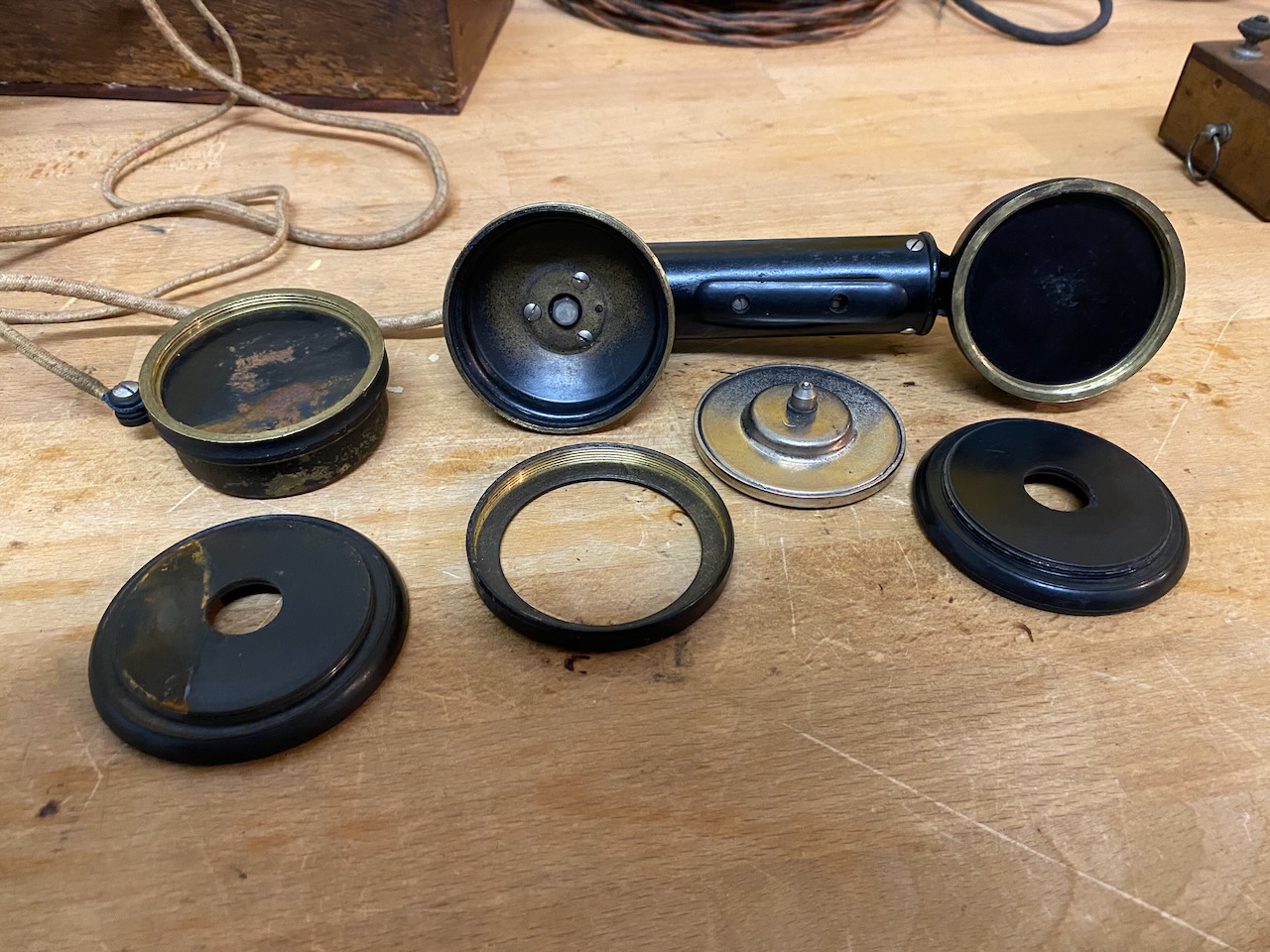
The microphone capsule is made by "Appareillage Électrique Eugène Busson".
There is no additional lid on the capsule when mounted so the capsule front is expoed at all times.
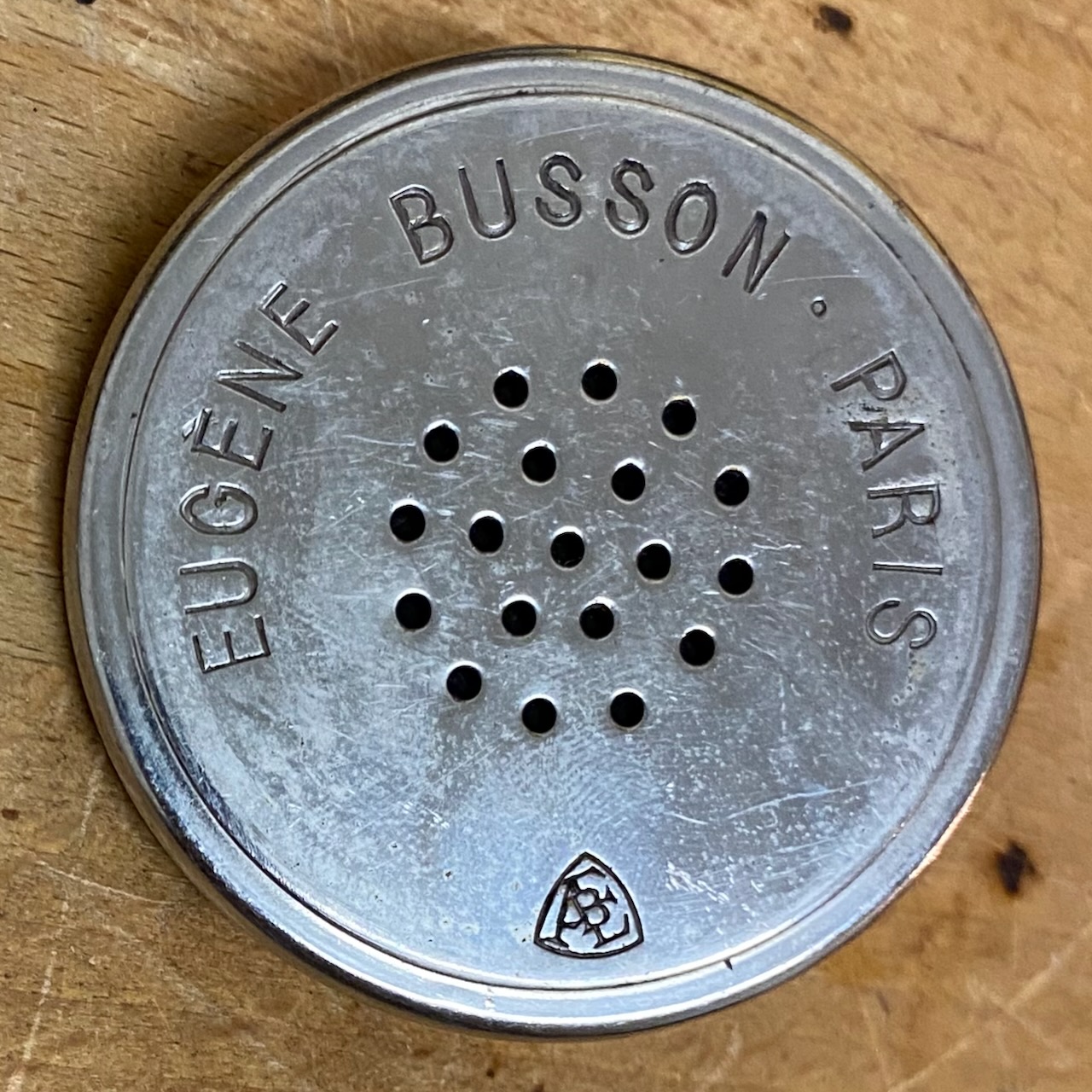
Capsule back.
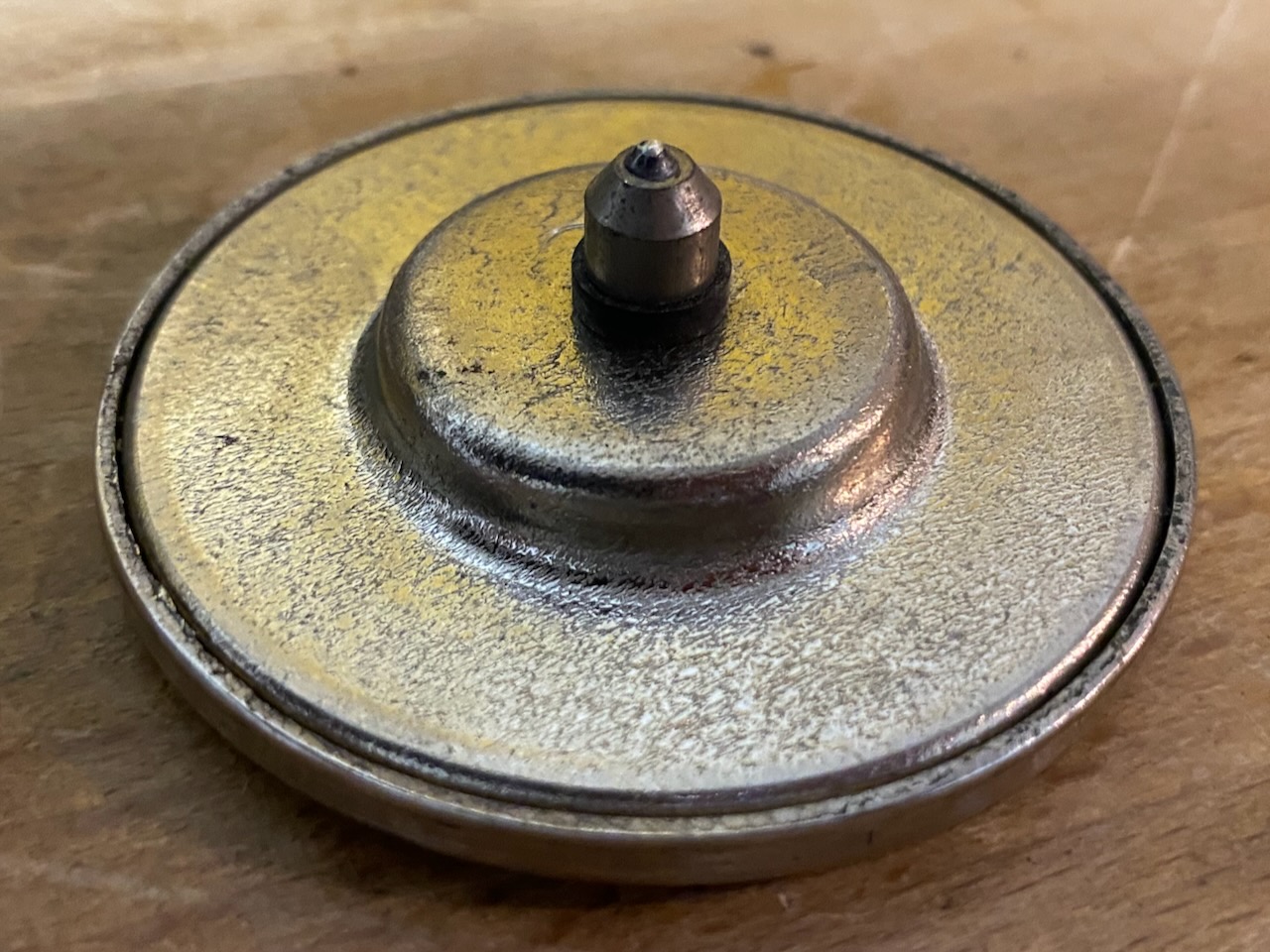
Burgunder handset.
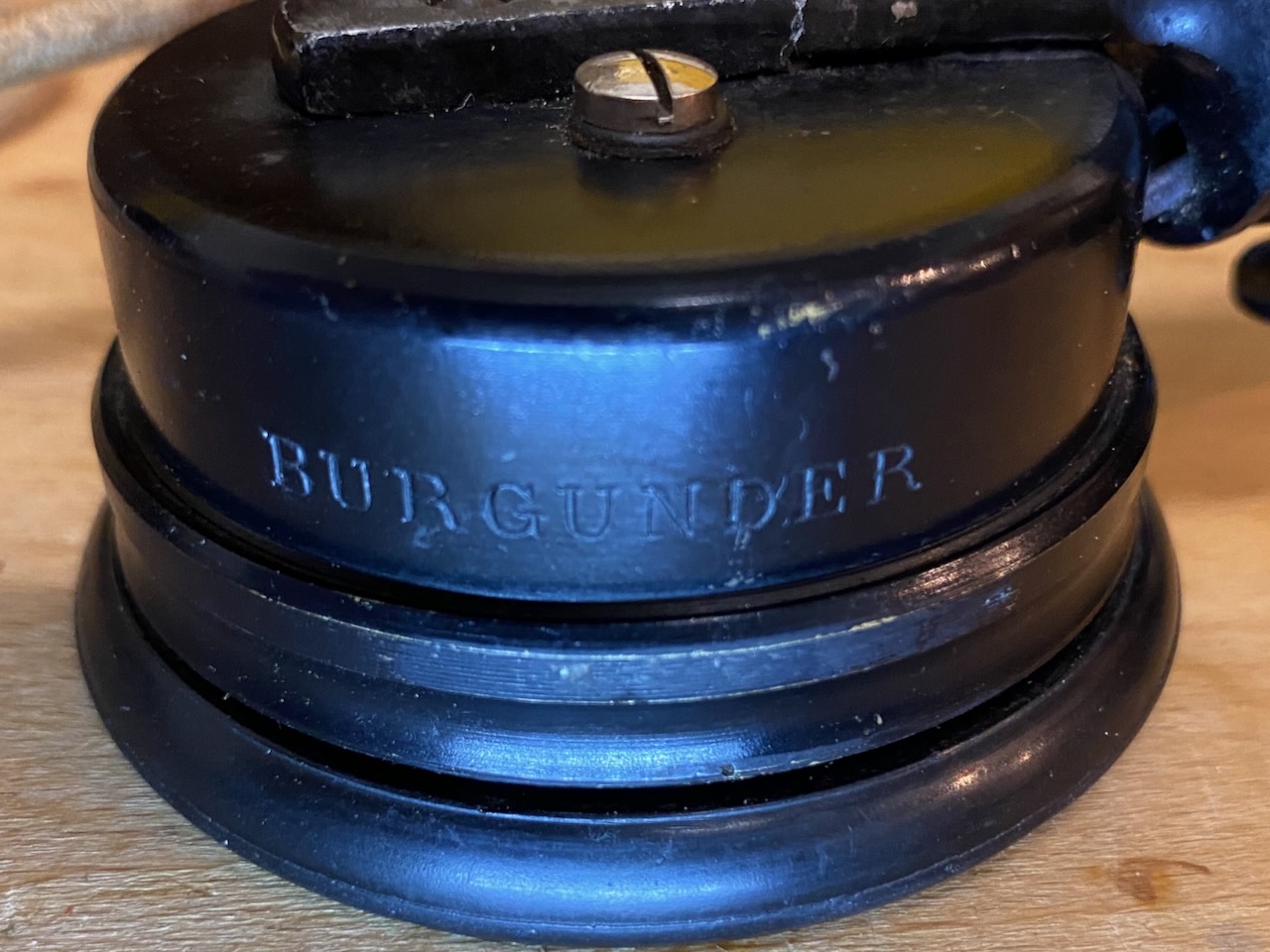
Receiver side using the Système de J. Teilloux.
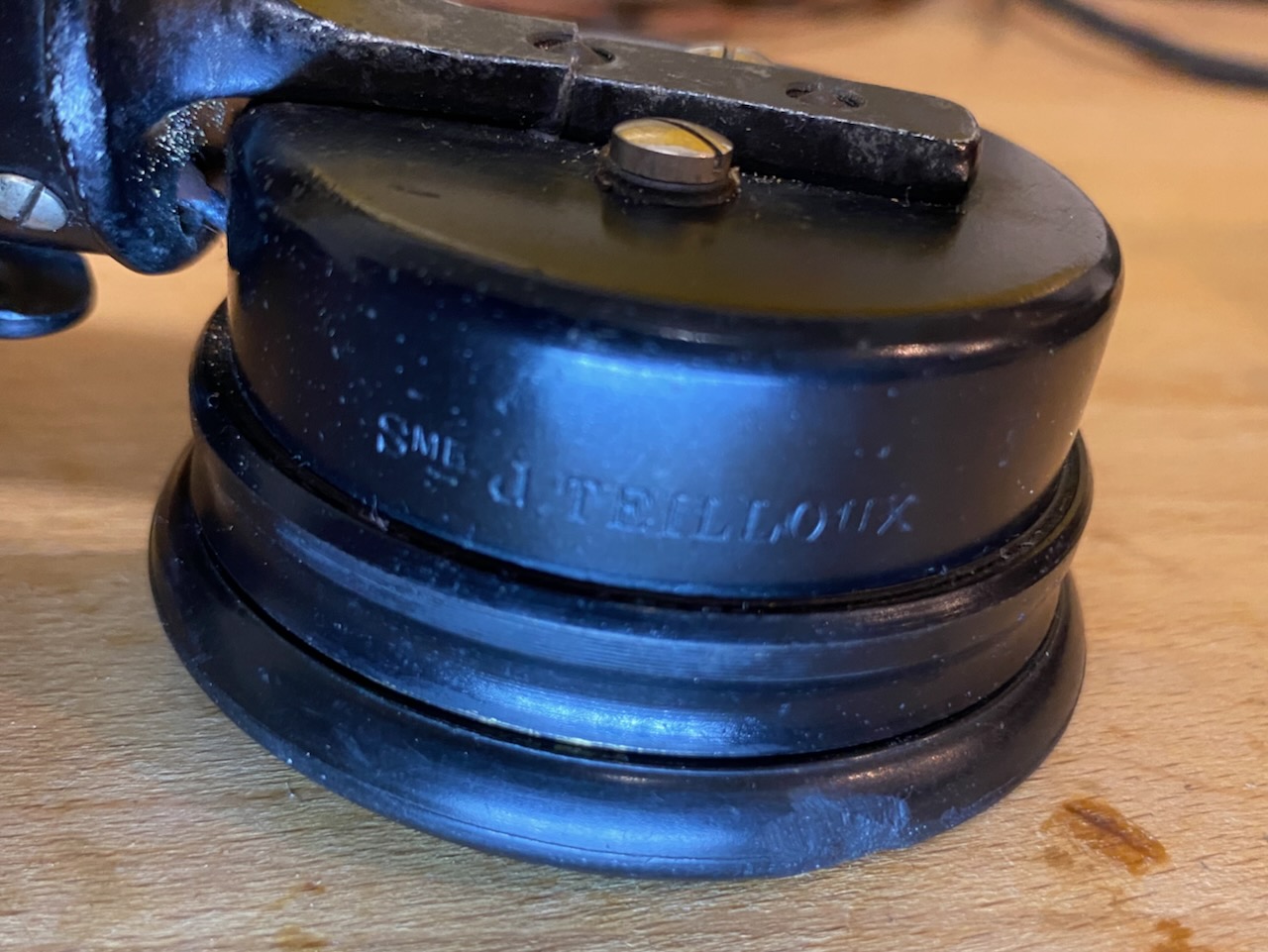
Chassis front.
Made by A. Burgunder, Paris.
To the left the battery connector cords.
Top right the holding brackets for the ringer.
Right middle the adjusting screws for the buzzer.
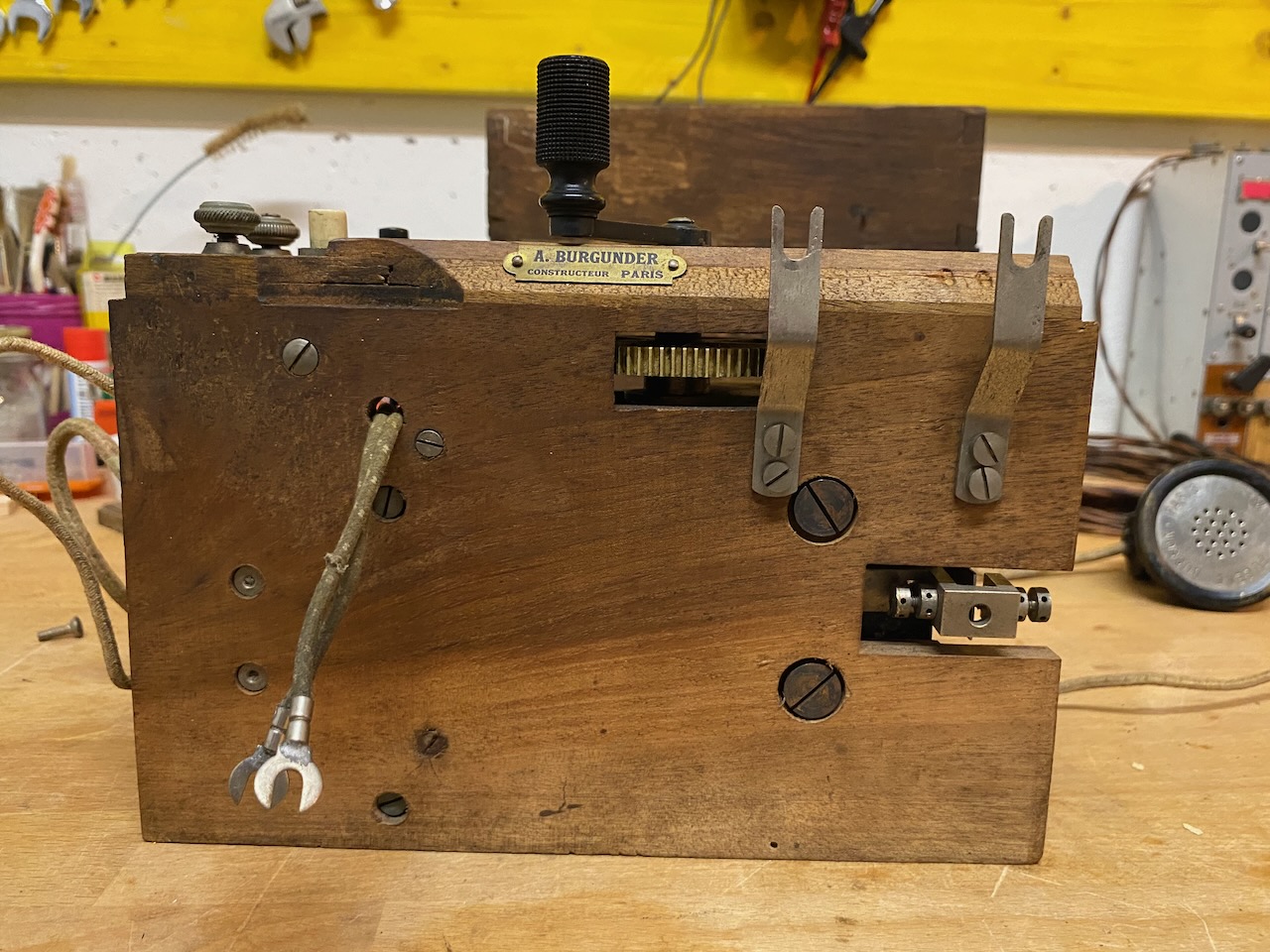
Chassis from the back showing the magneto.
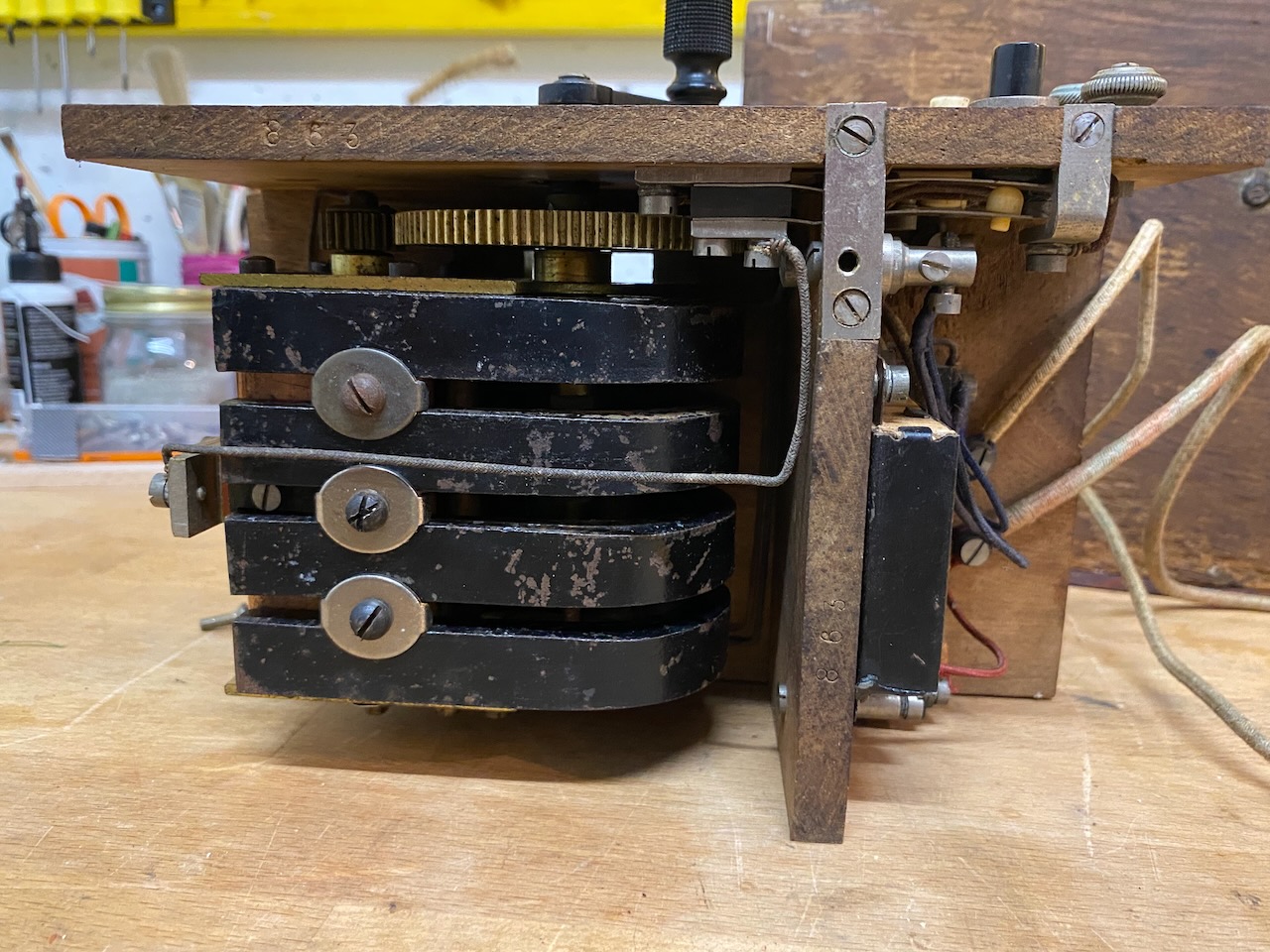
Chassis from side showing magneto.
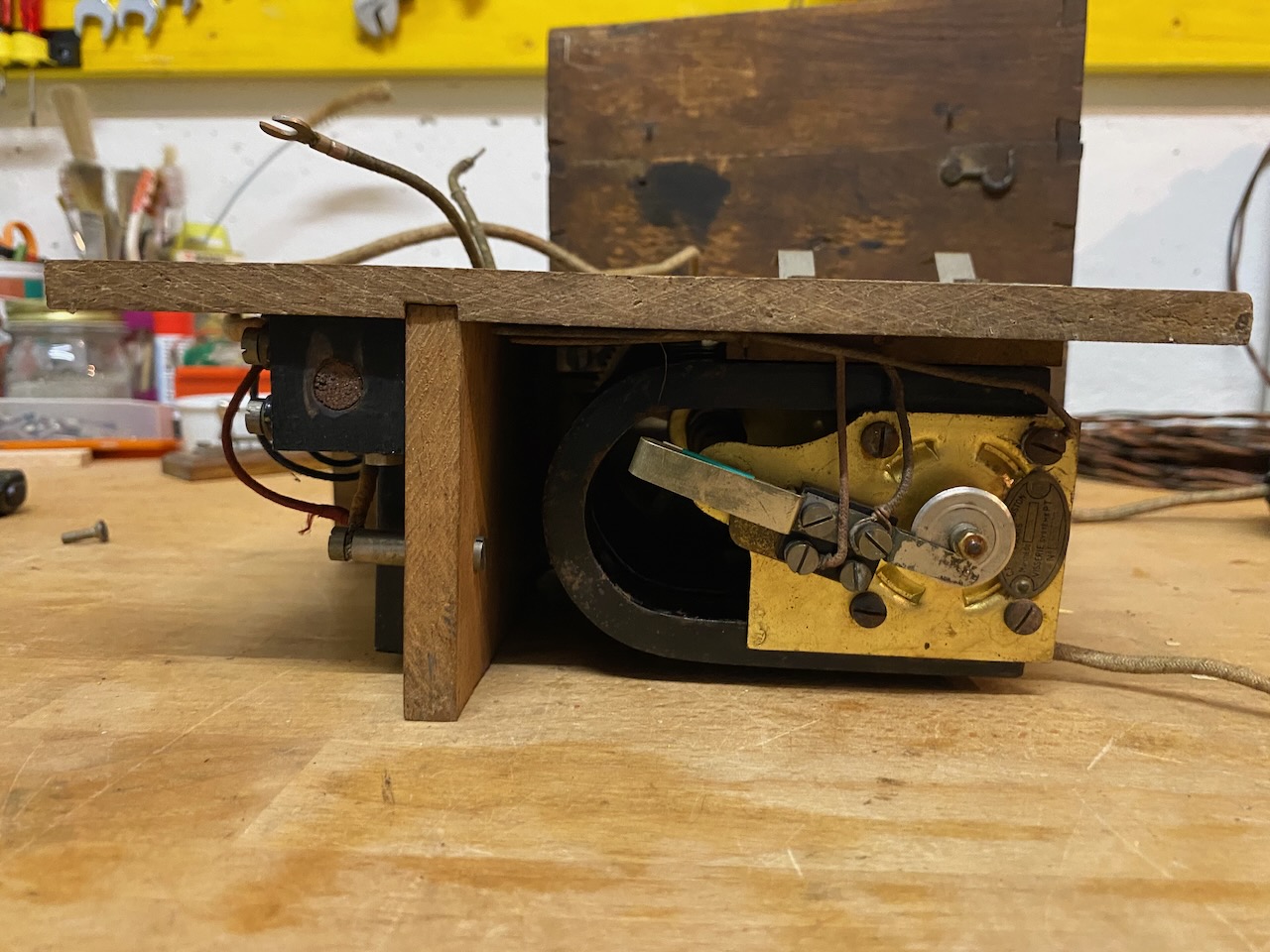
Magneto detail.
I had to add a small spacer to fix the magneto contact breaker.
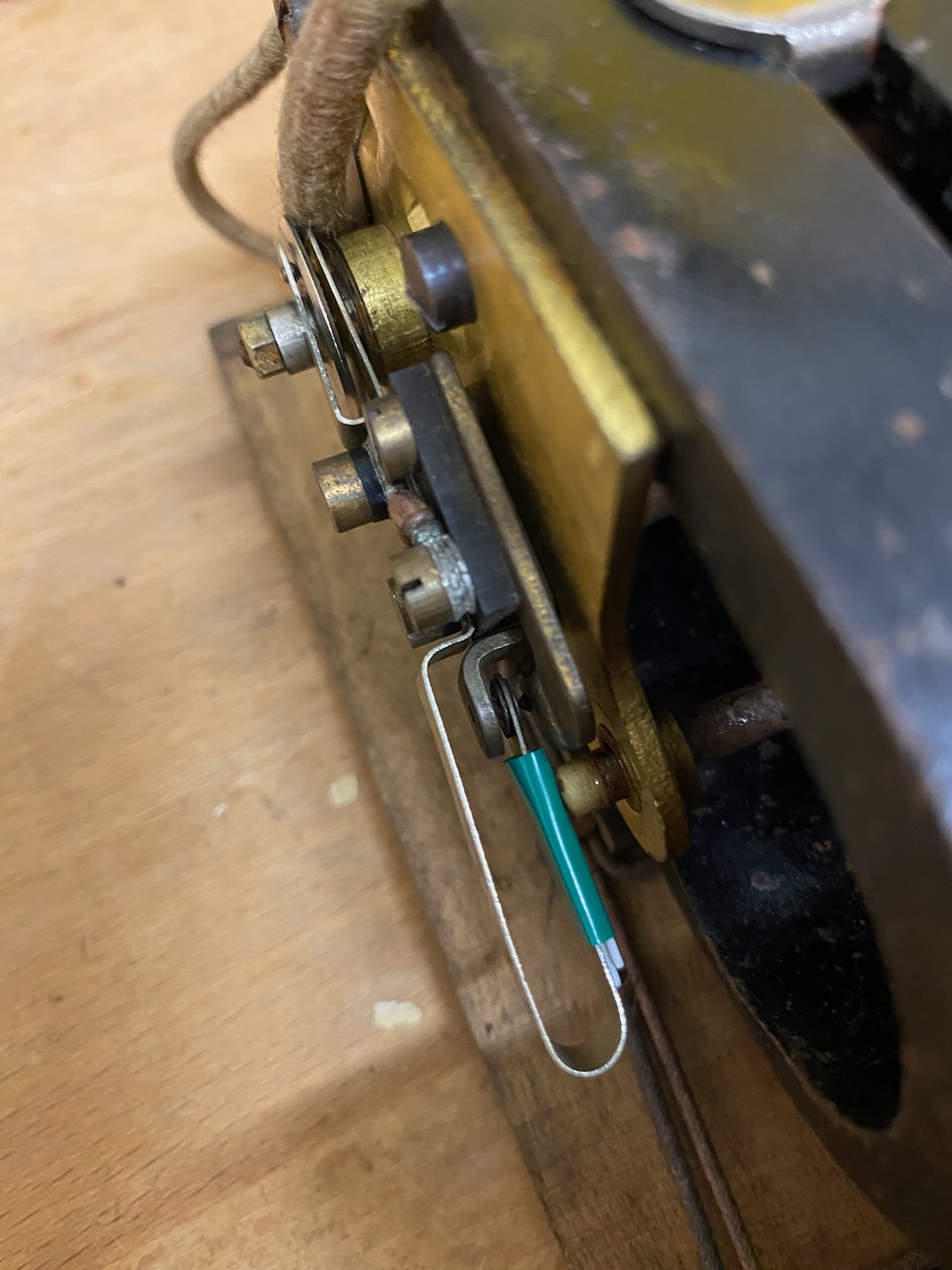
Magneto made by Thomson-Houston.
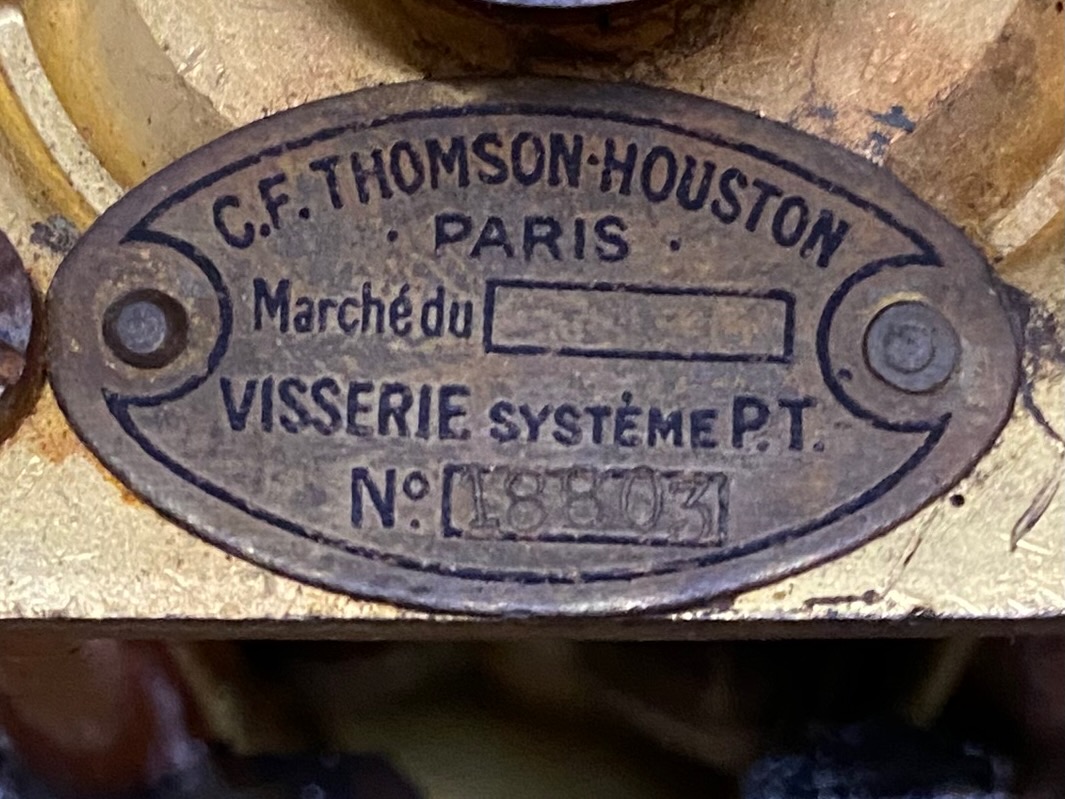
The buzzer mechanism is mounted to the magneto bottom.
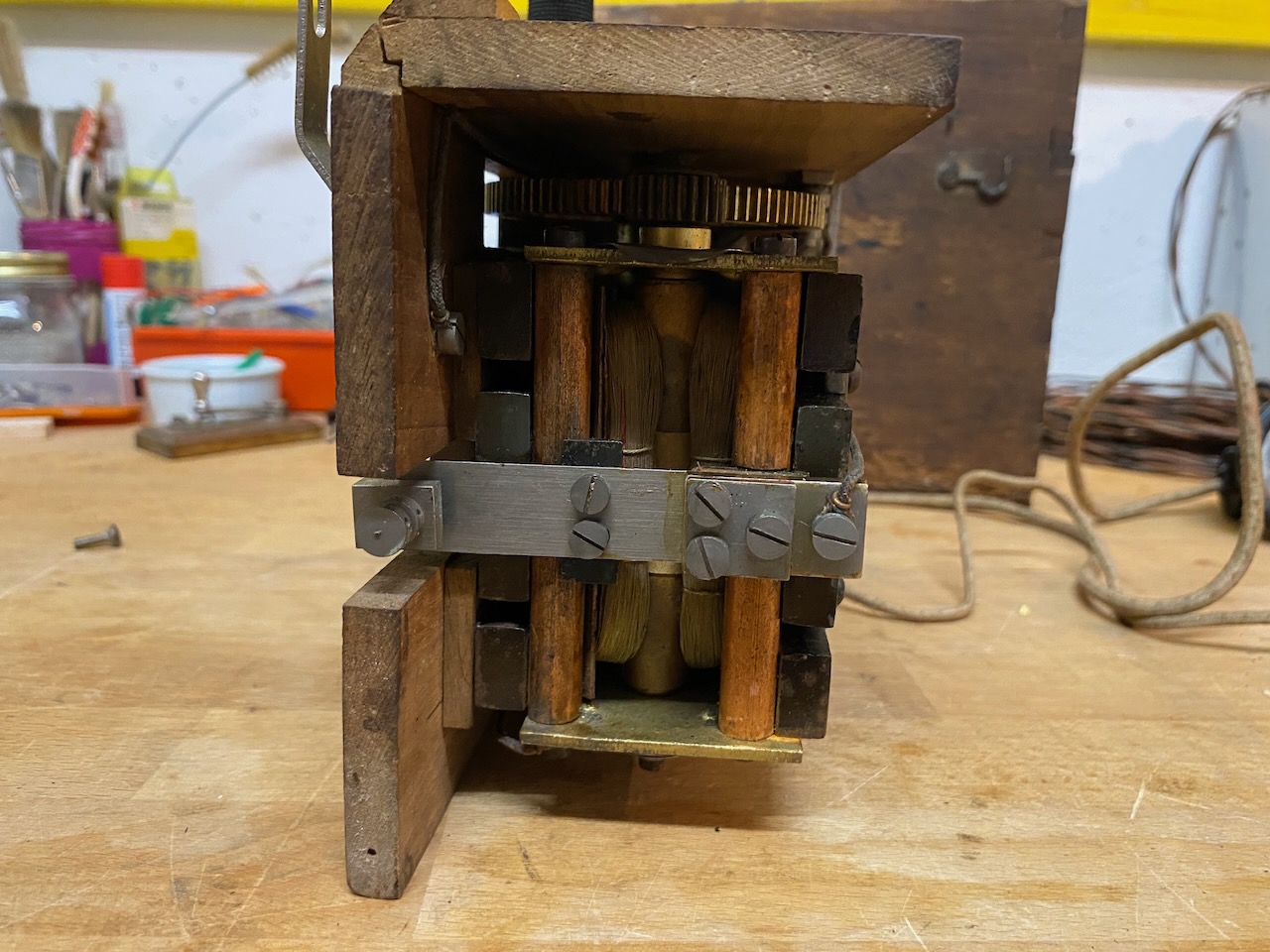
Buzzer adjusting screws.
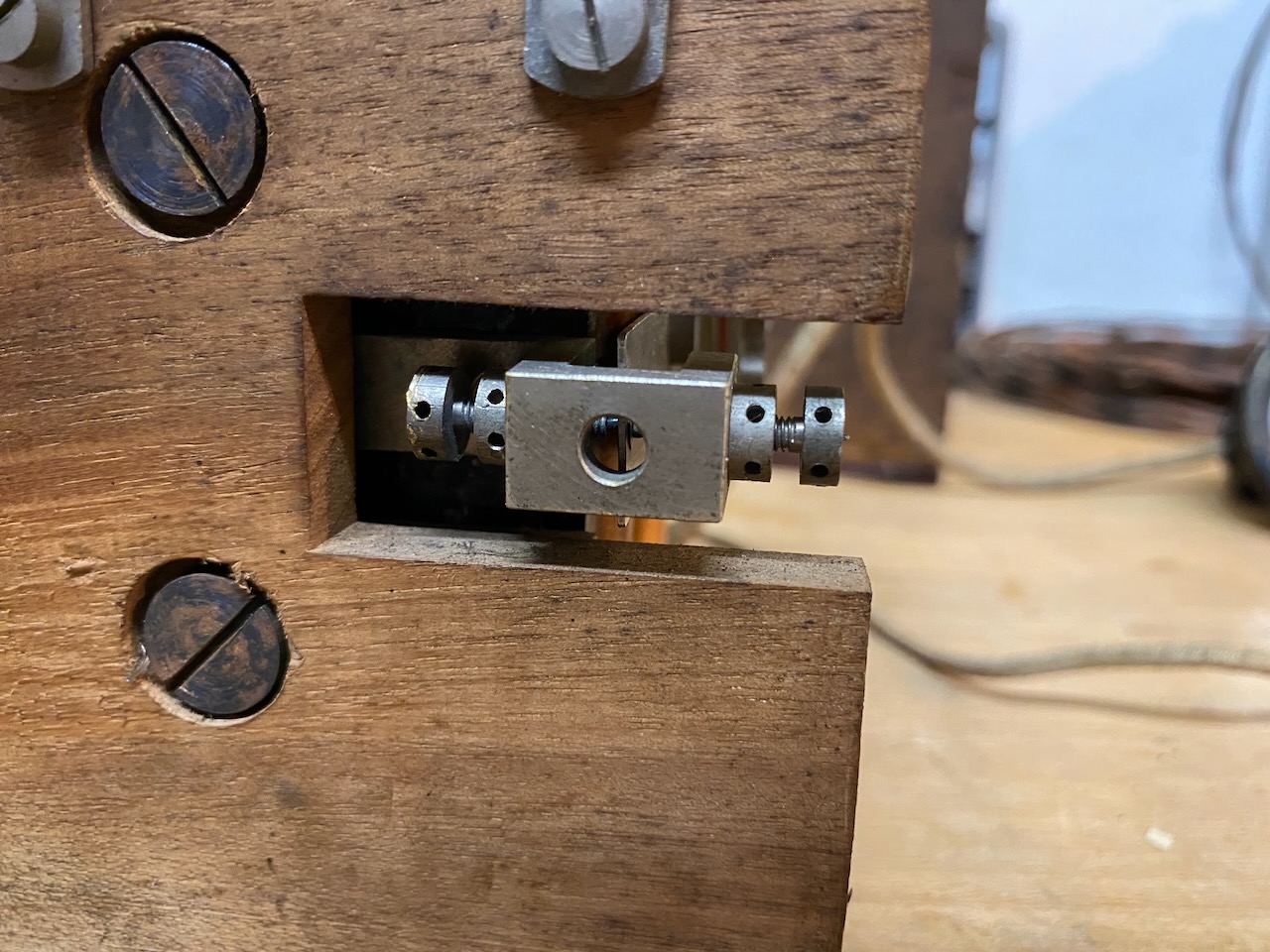
Induction coil and capacitor.
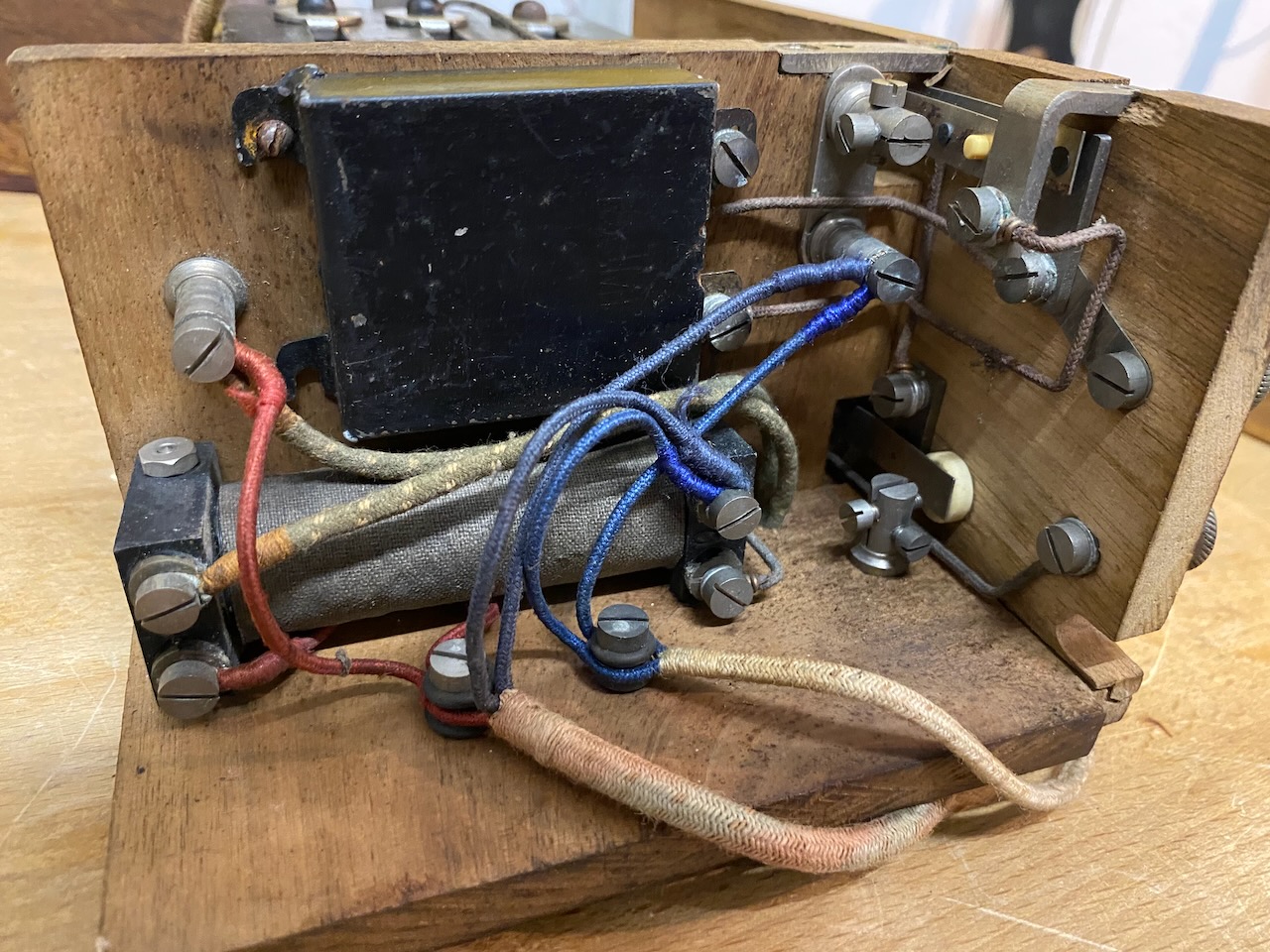
1,5uF capacitor.
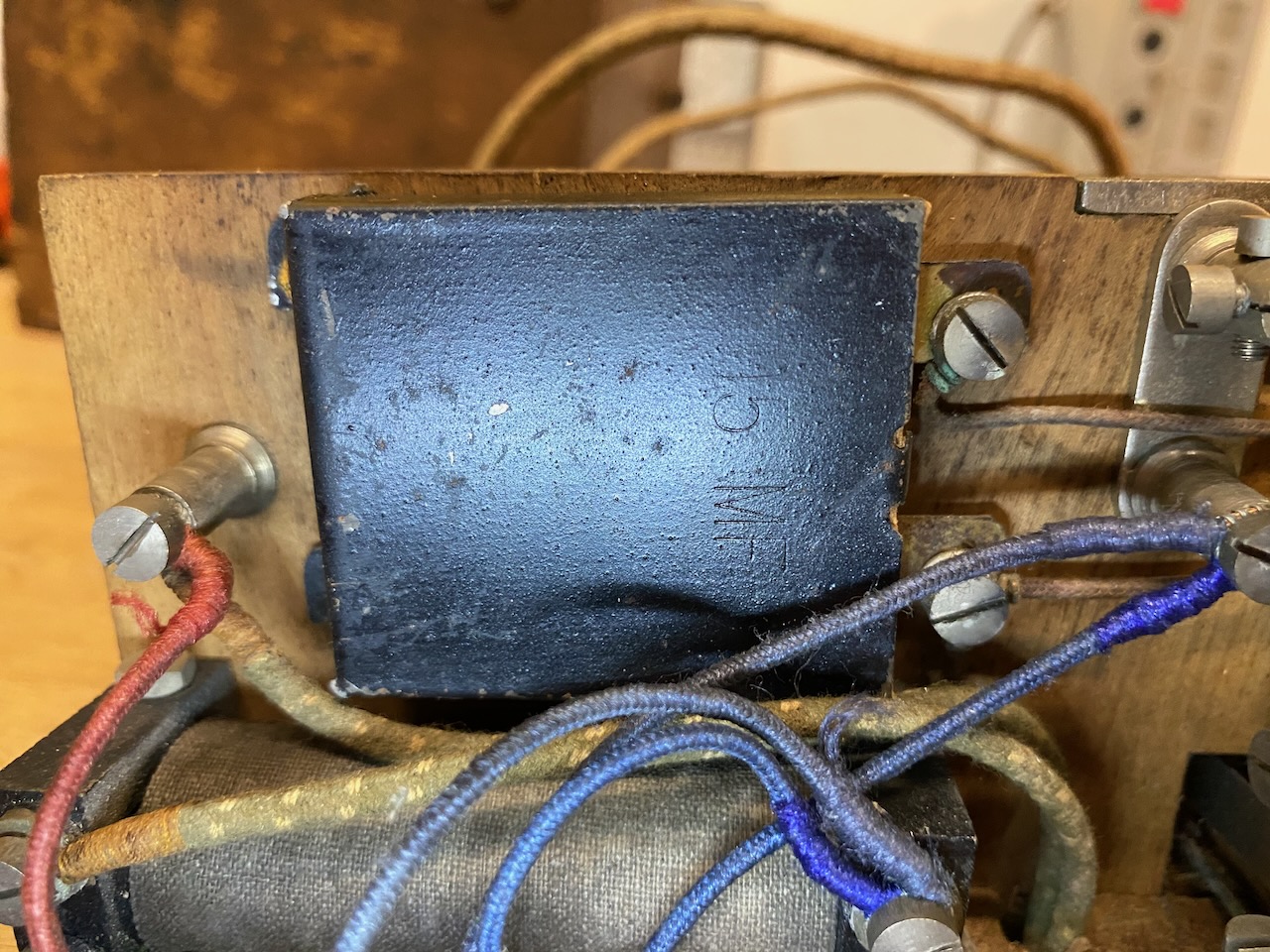
Black button (BN bouton noire) mechanism.
The black button activates the buzzer.
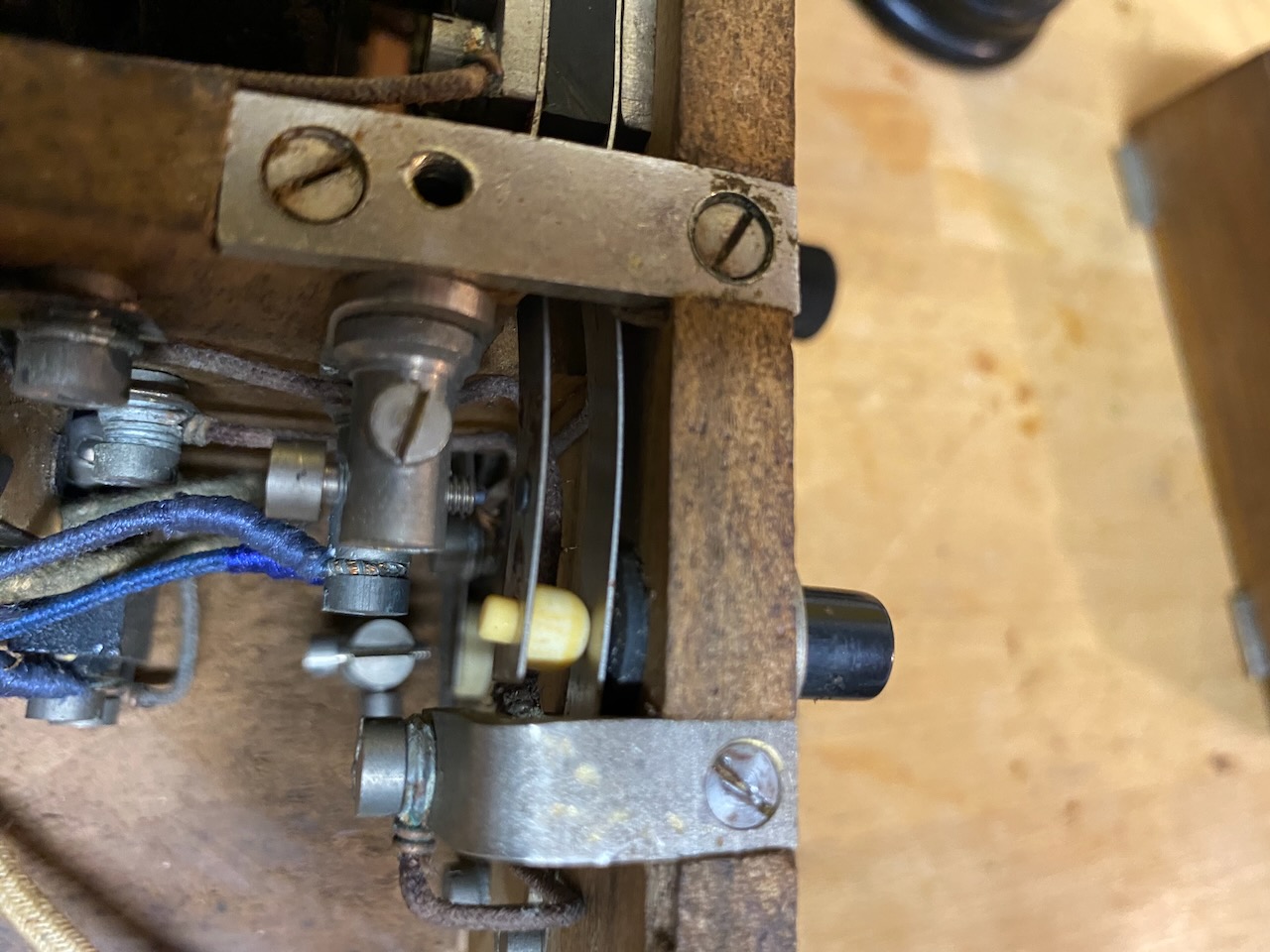
White buton (BB bouton blanc) mechanism.
The white button is the line control button.
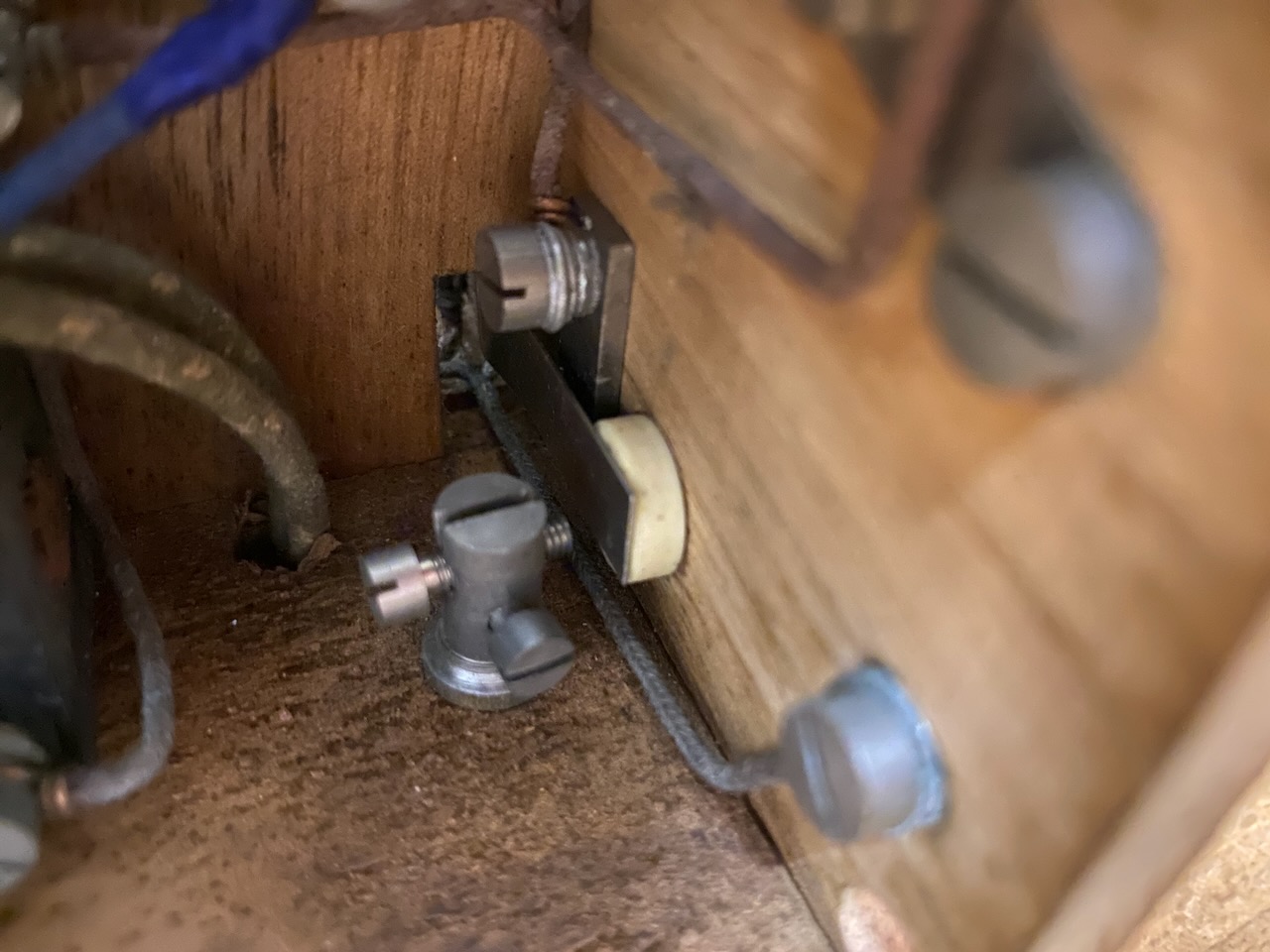
The open ringer box.
This ringer is of vibrating type, reacting to DC and AC signalling.
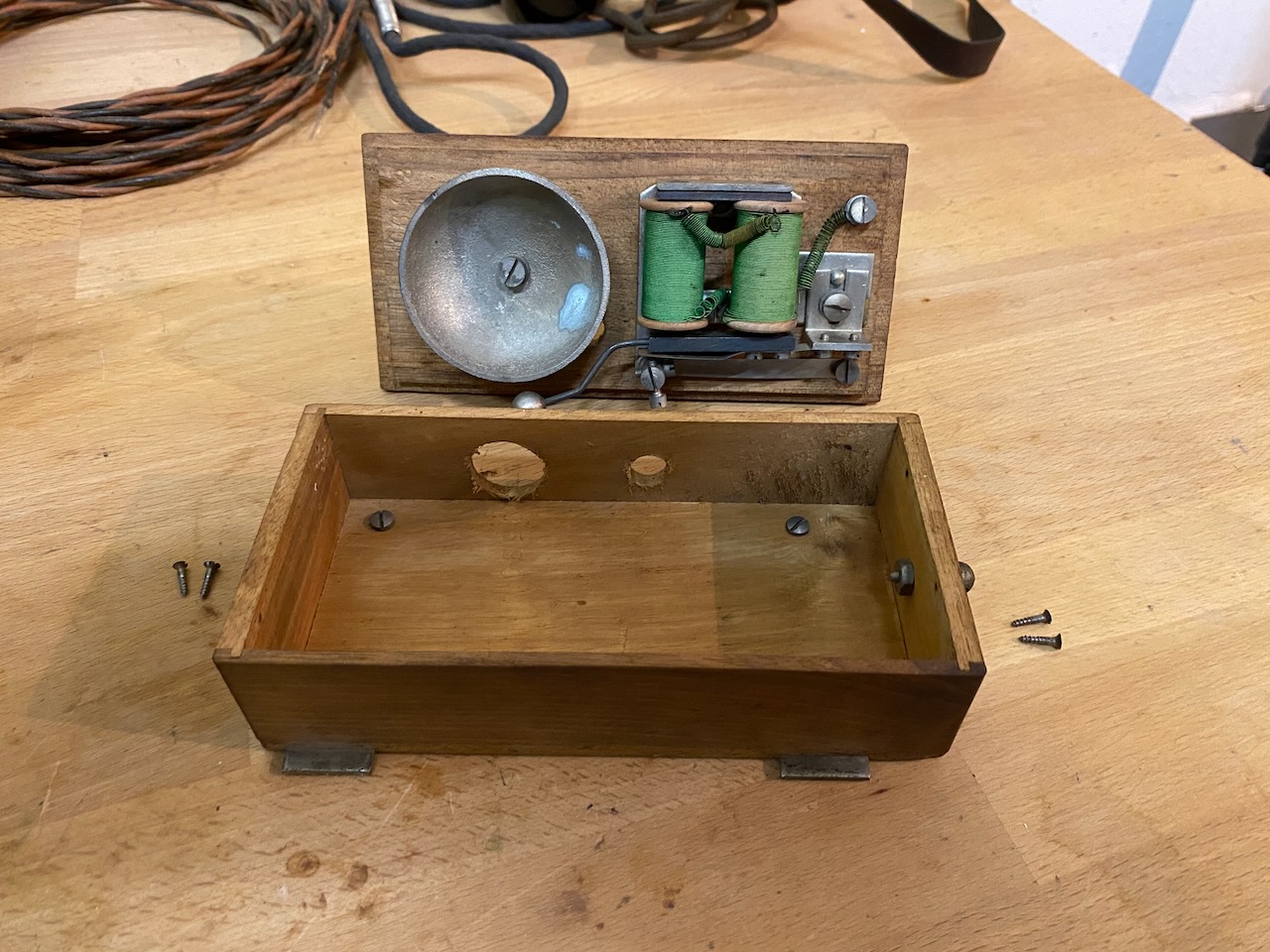
The ringer assembly closed.
The ringer can be removed to use externally for example on a switchboard [1].
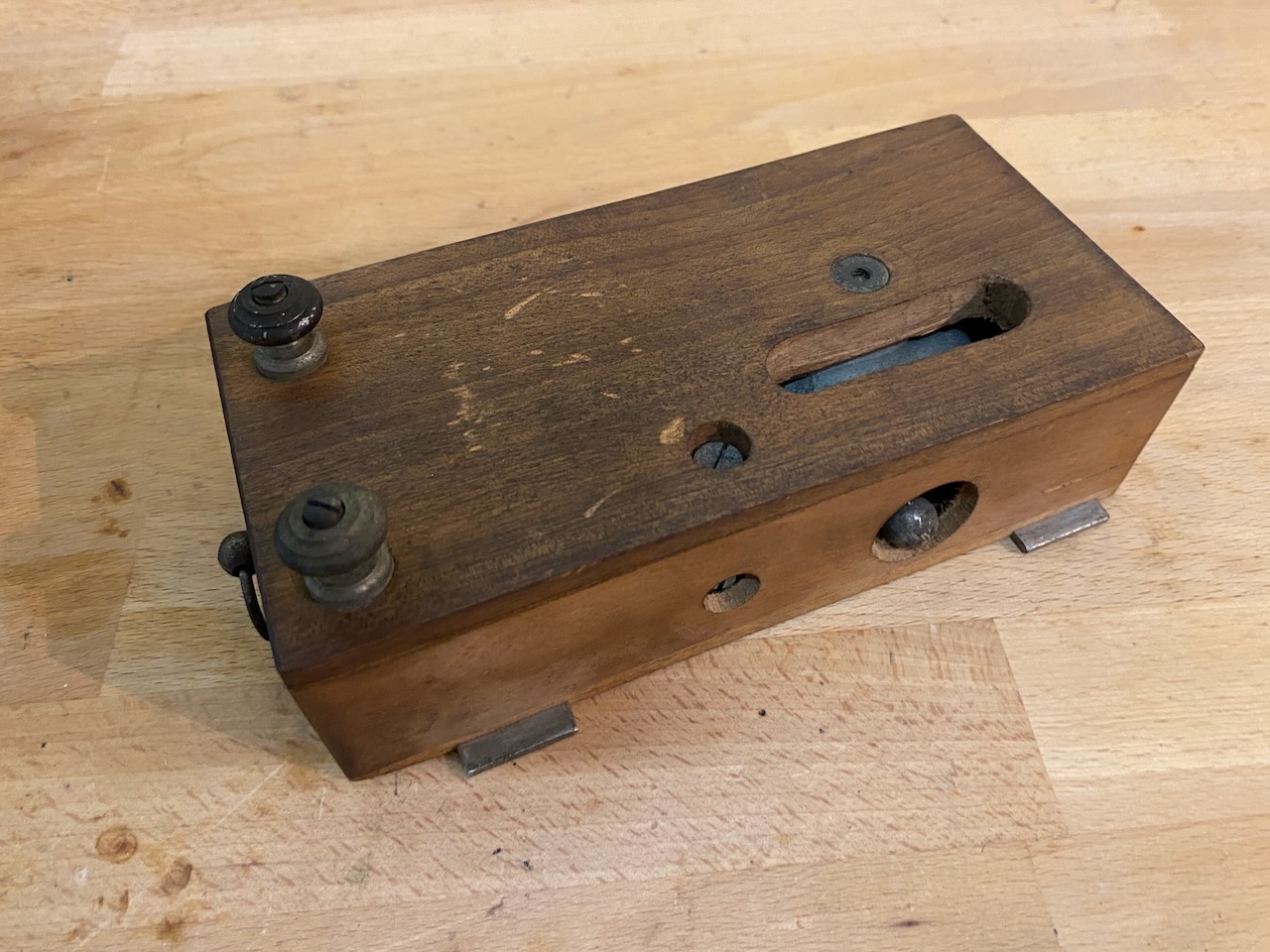
The device serno. seems to be 863.
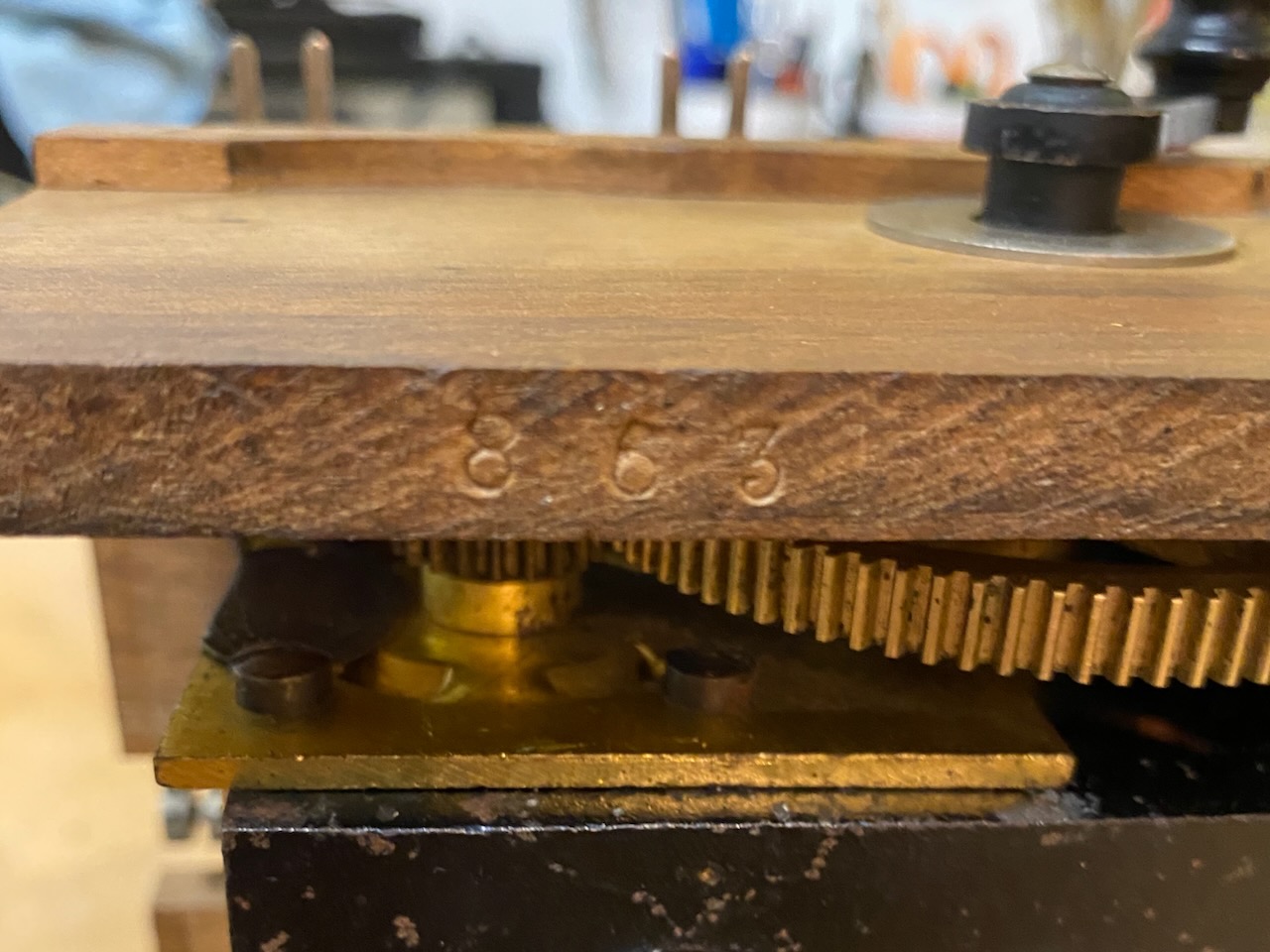
The device serno. seems to be 863.
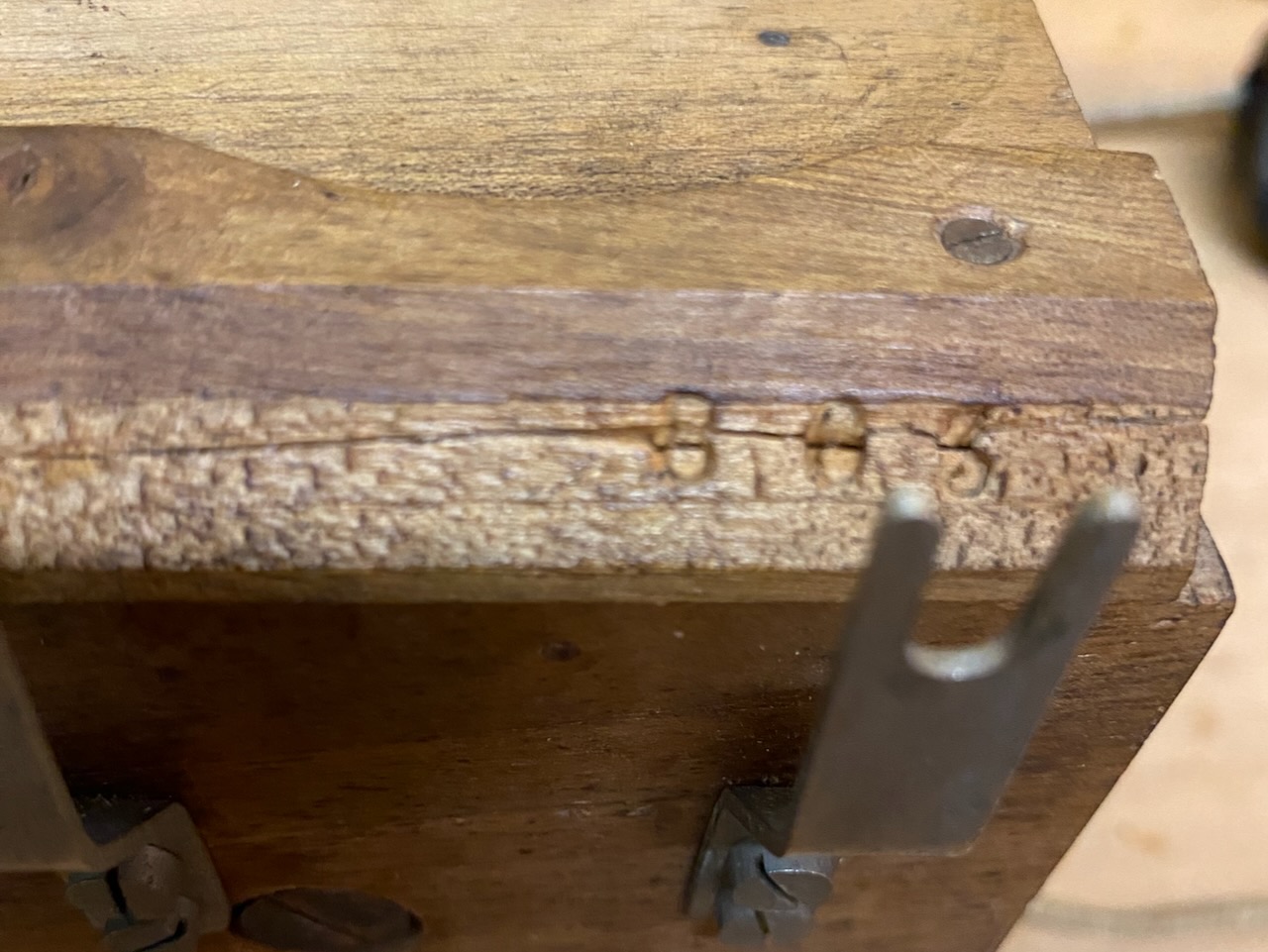
Ready to assemble.
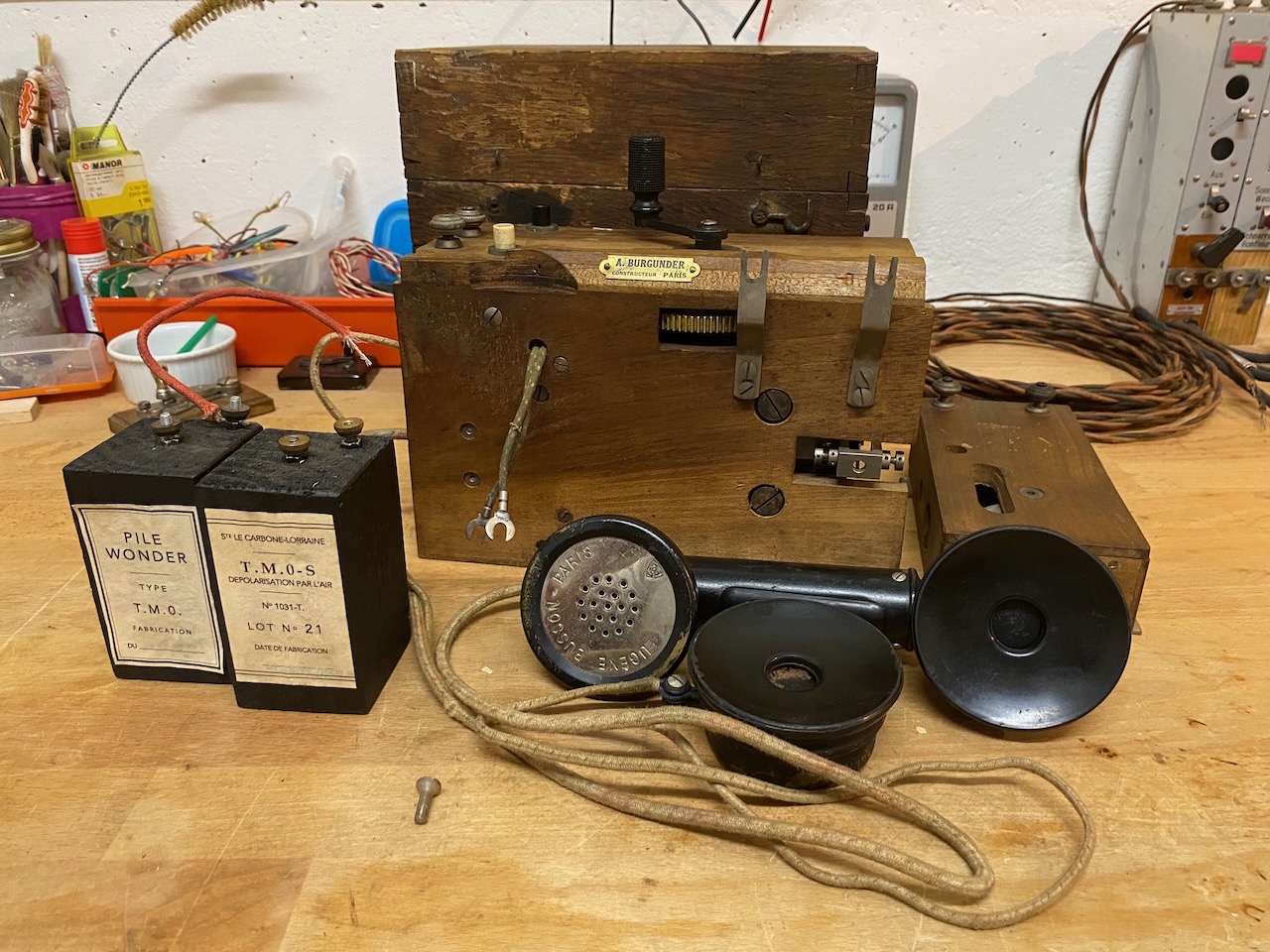
The empty box.
Inside the lid a latch to store a spare TX capsule.
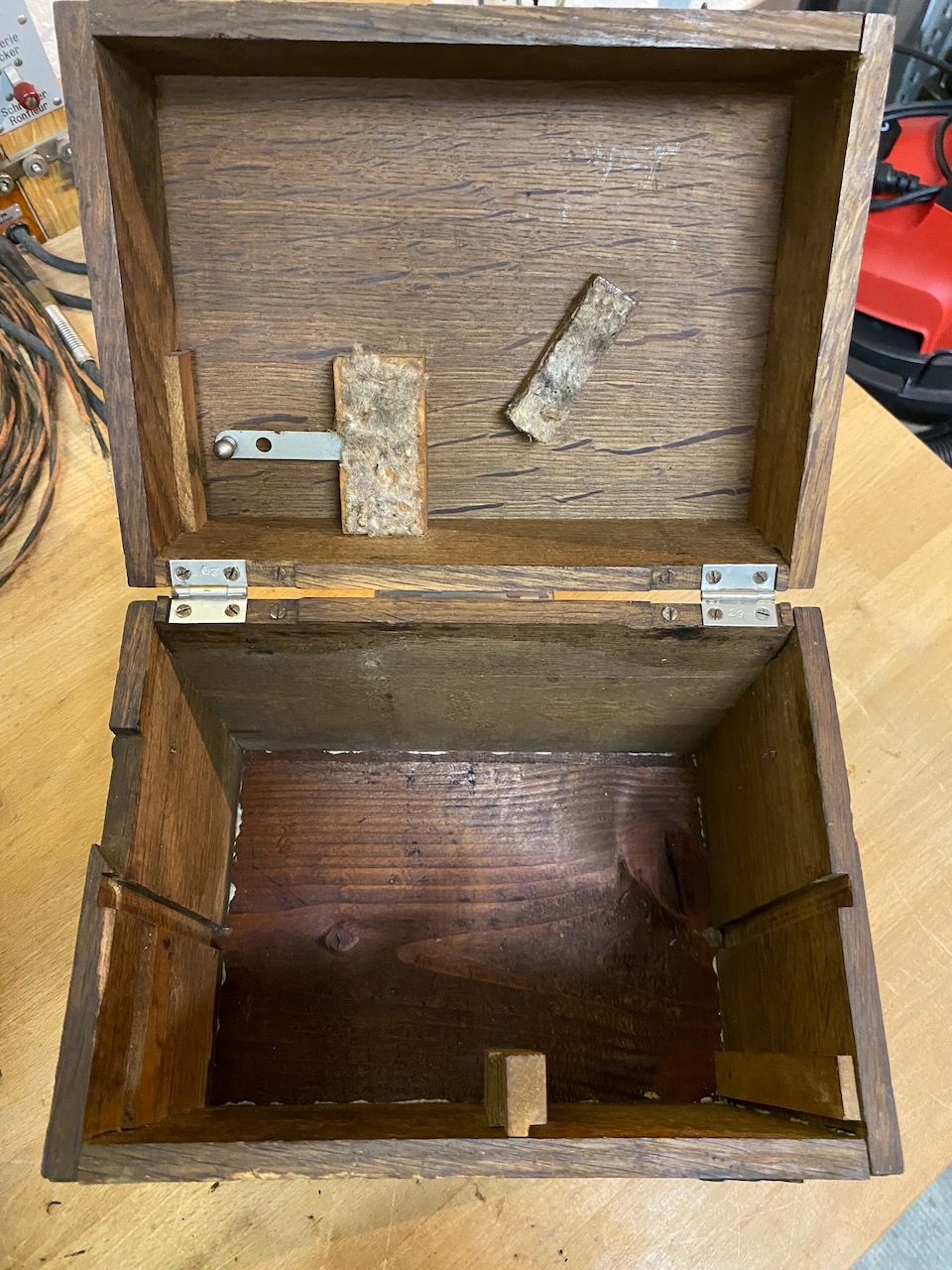
All mounted, including batteries.
The lid to close the battery compartment is missing.
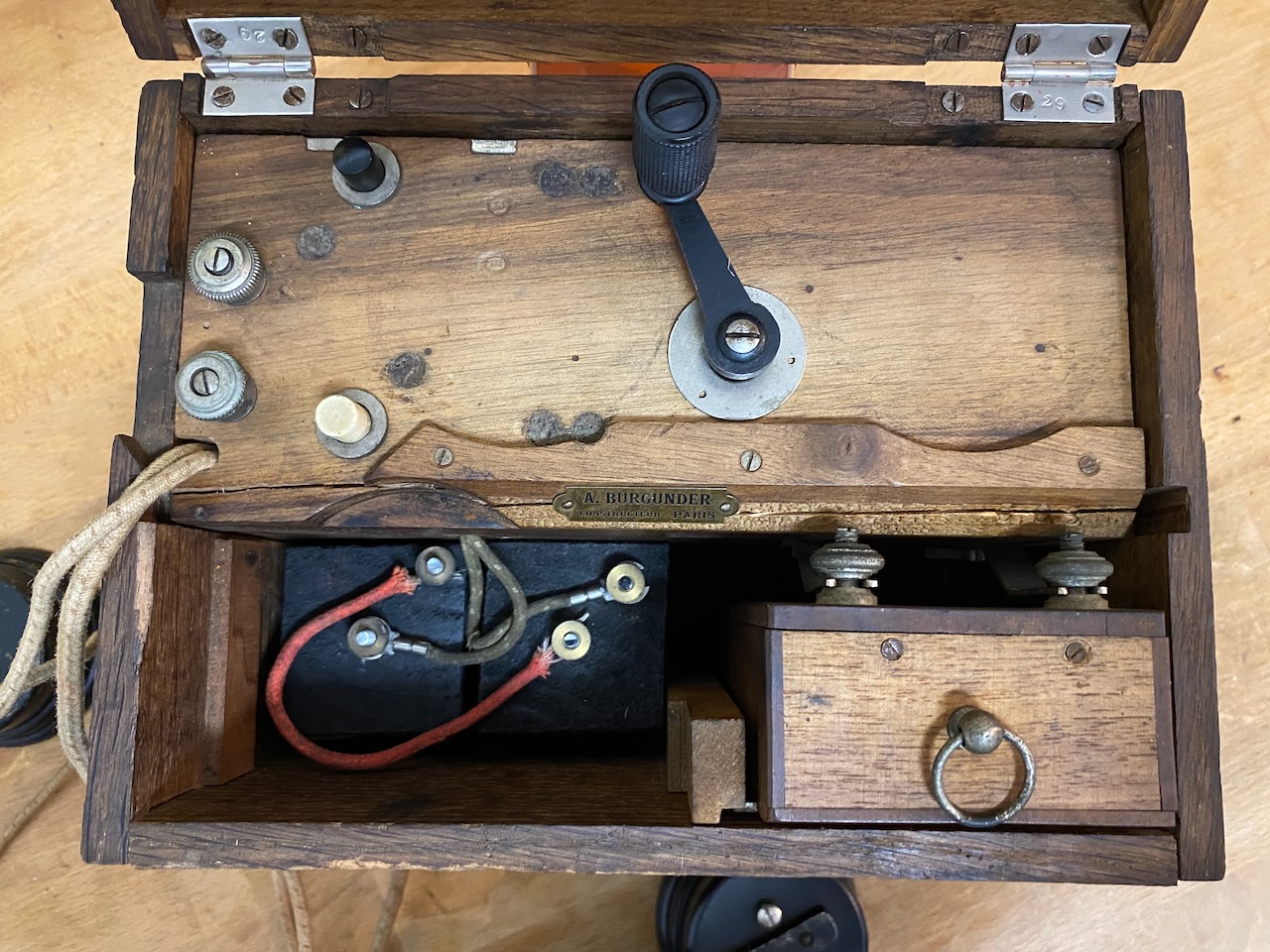
Ready for storage.
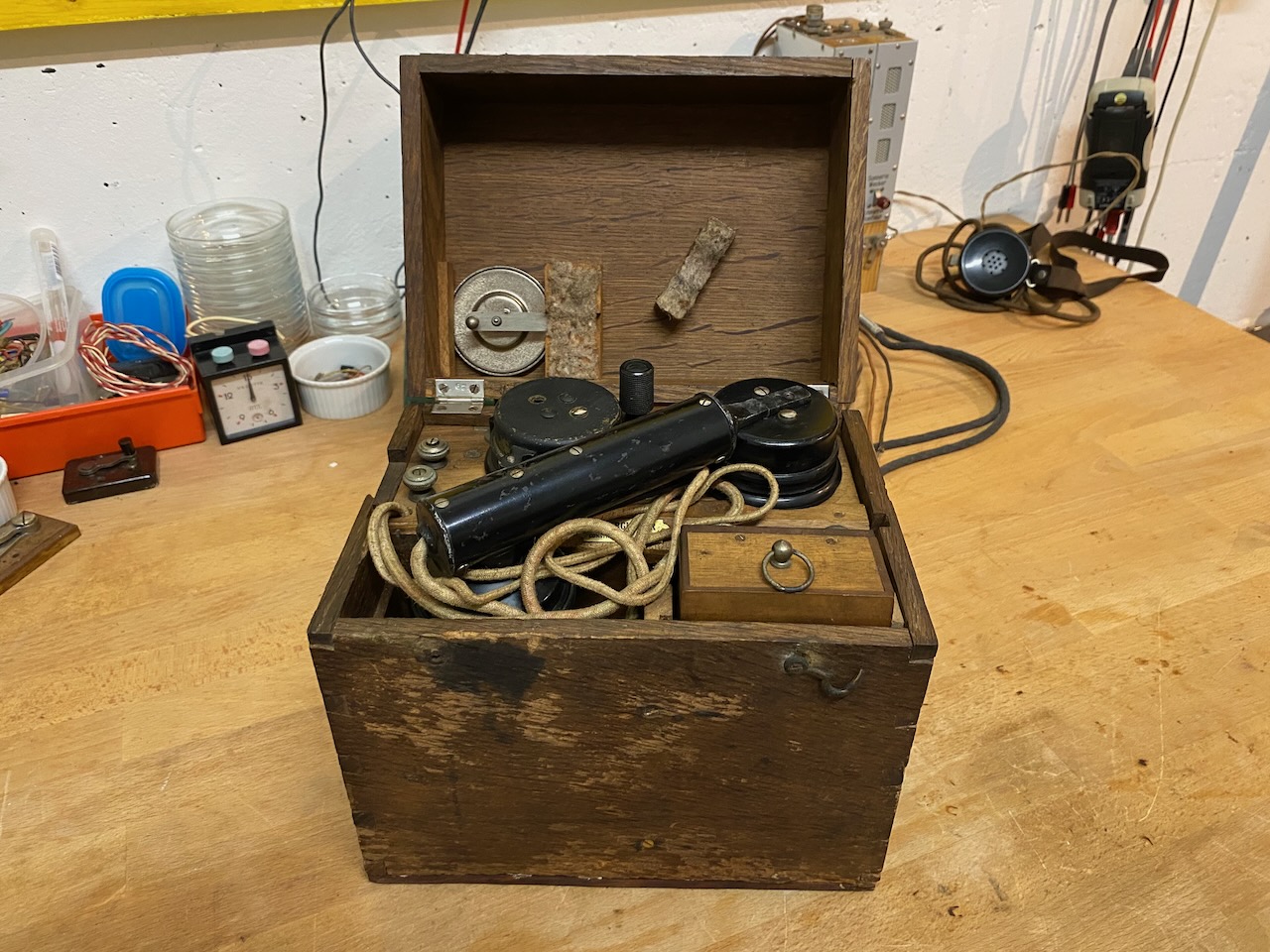
Ready to use.
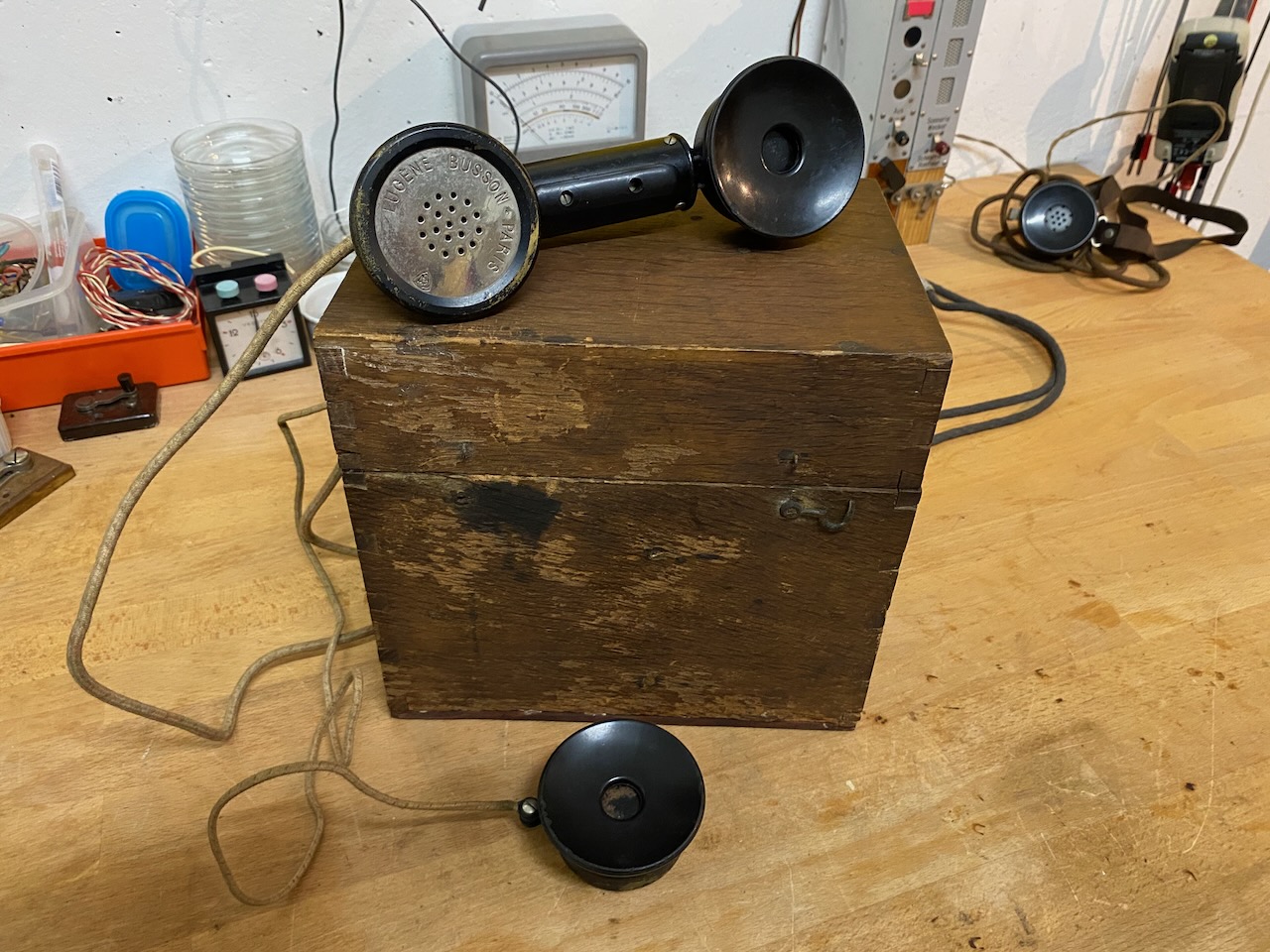
Ready to use.
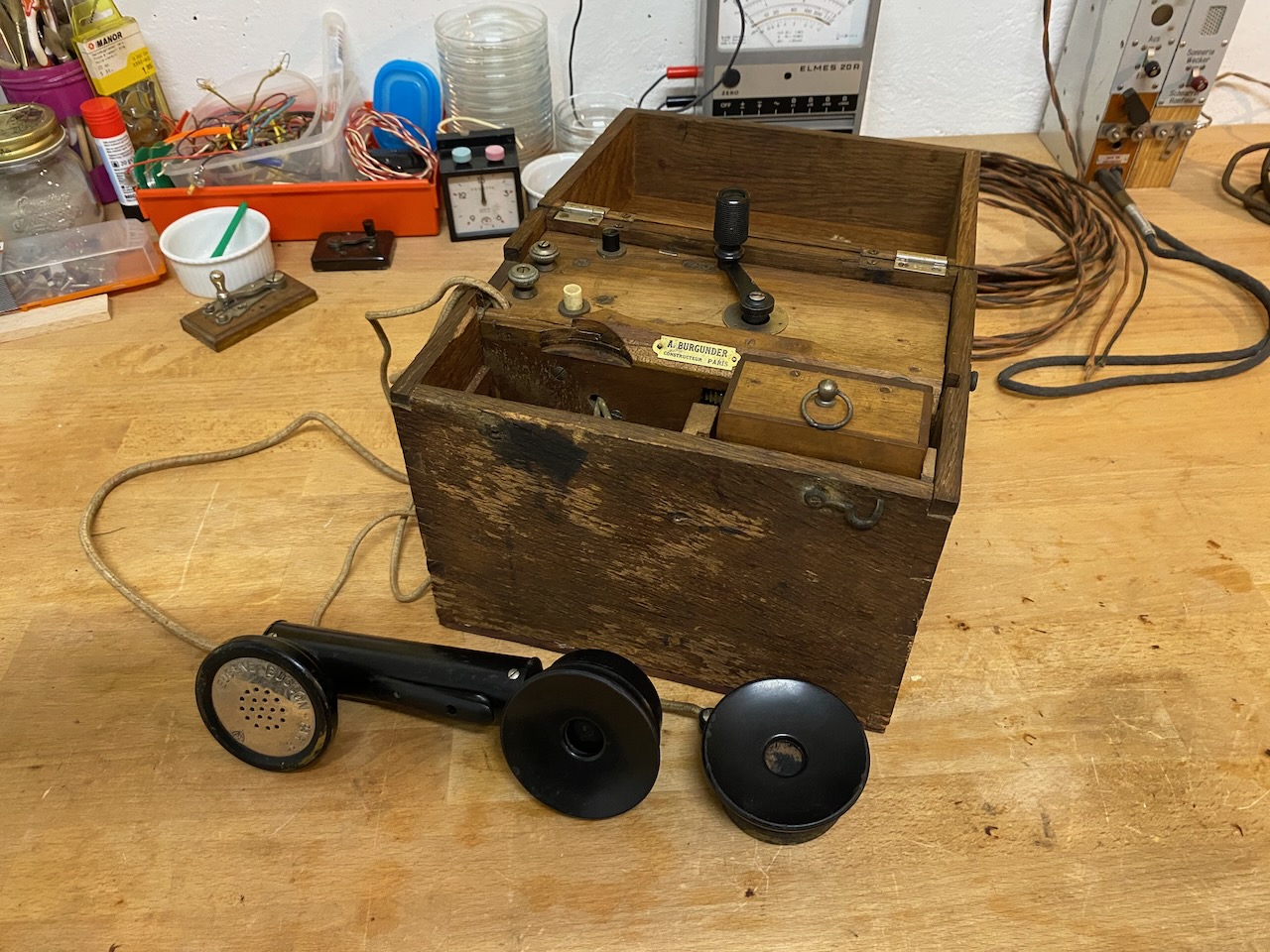
Closed box front.
The leather bag for transport is missing.
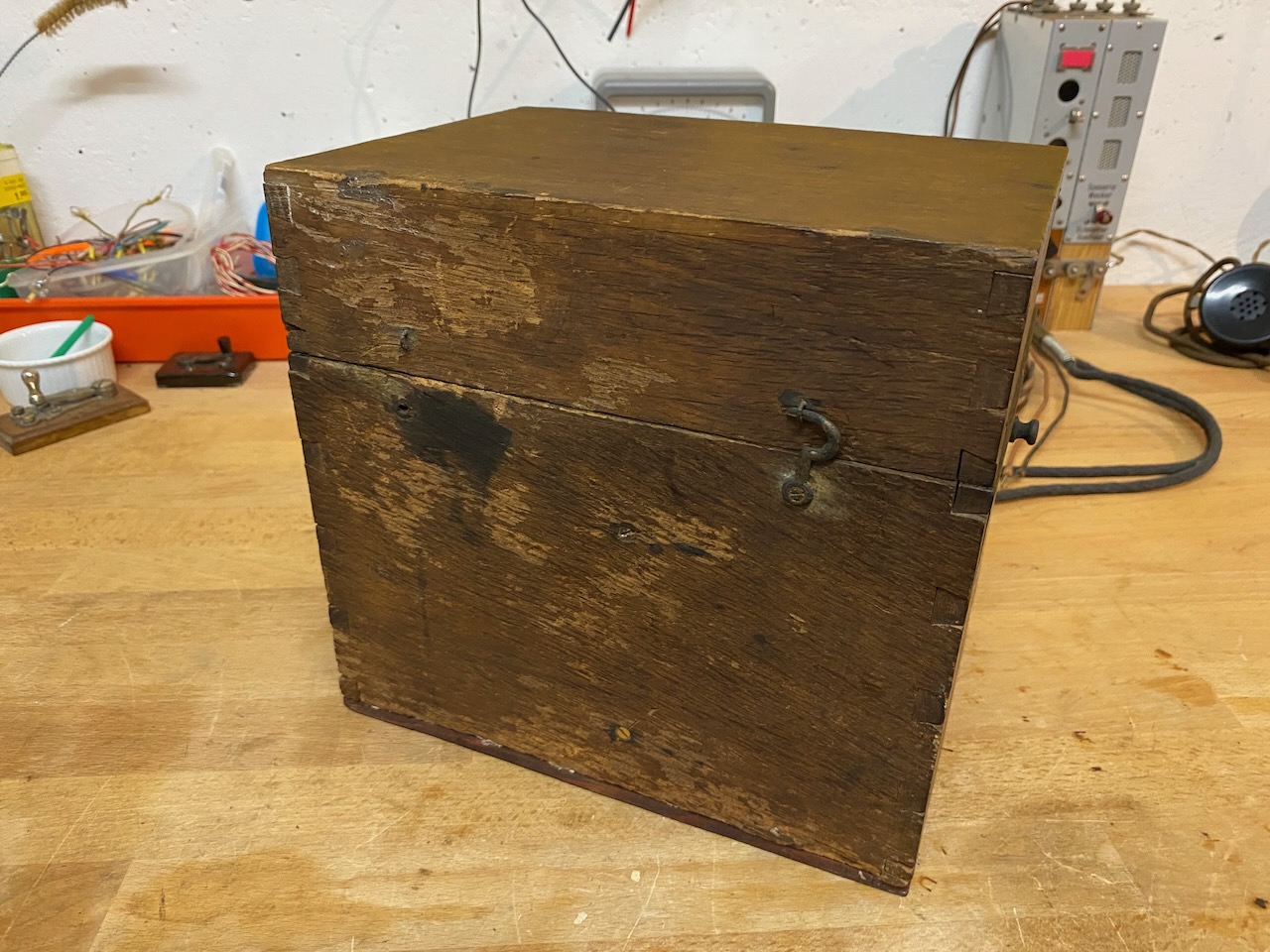
Back.
The hinges are not original.
(Original ones were broken)
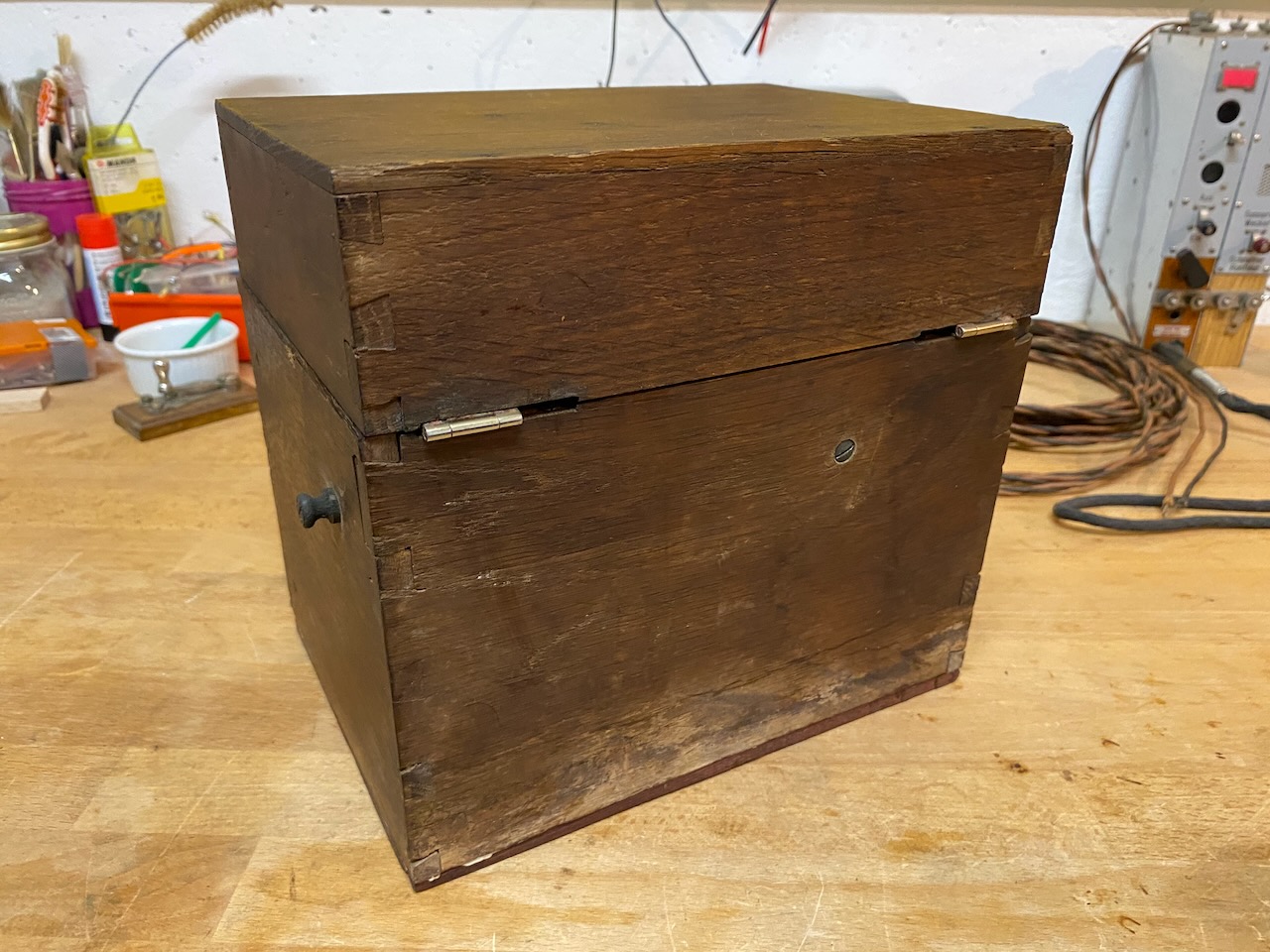
Example with leather bag from [4]
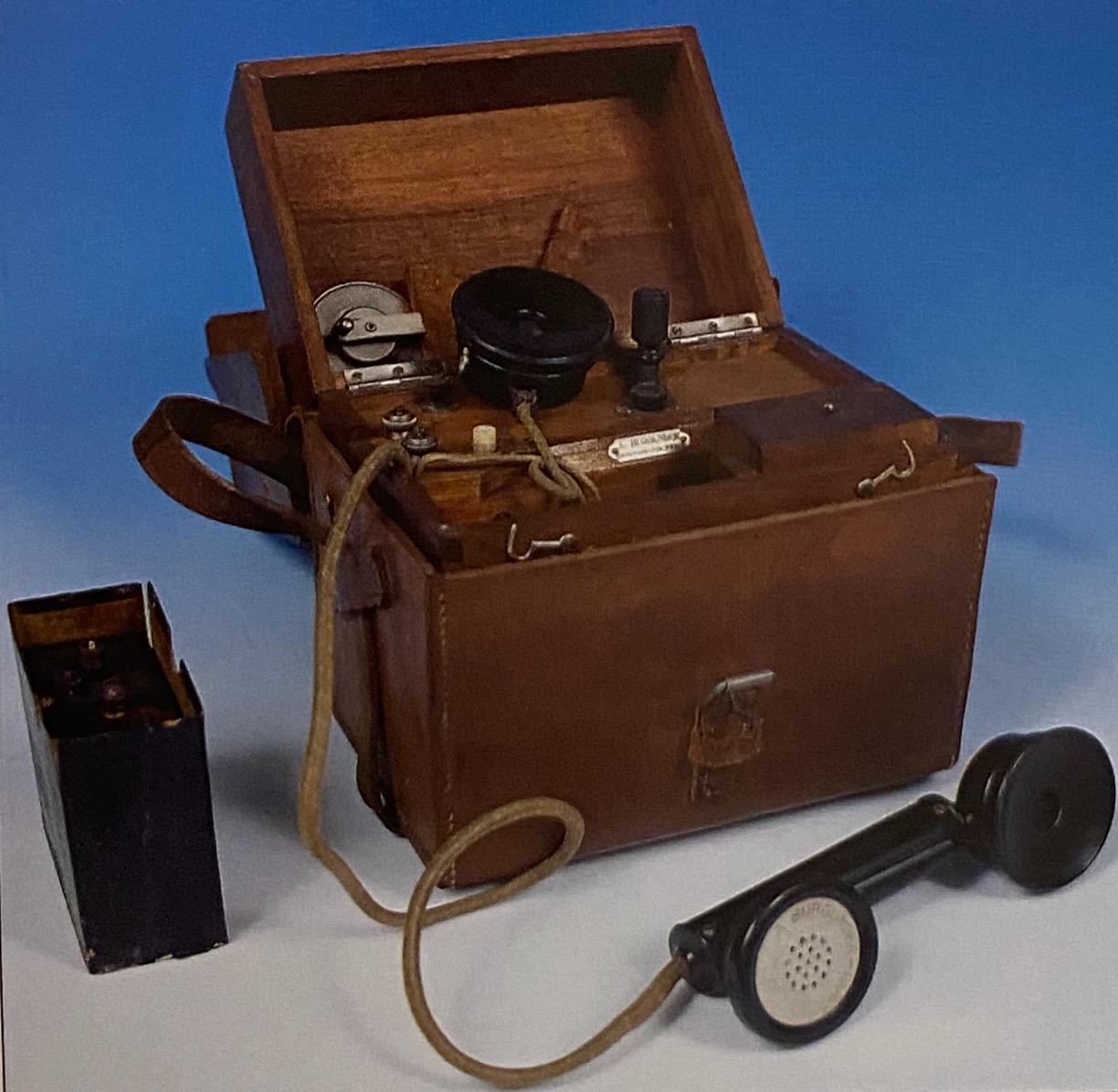
Creative Commons Attribution-ShareAlike 4.0 International License